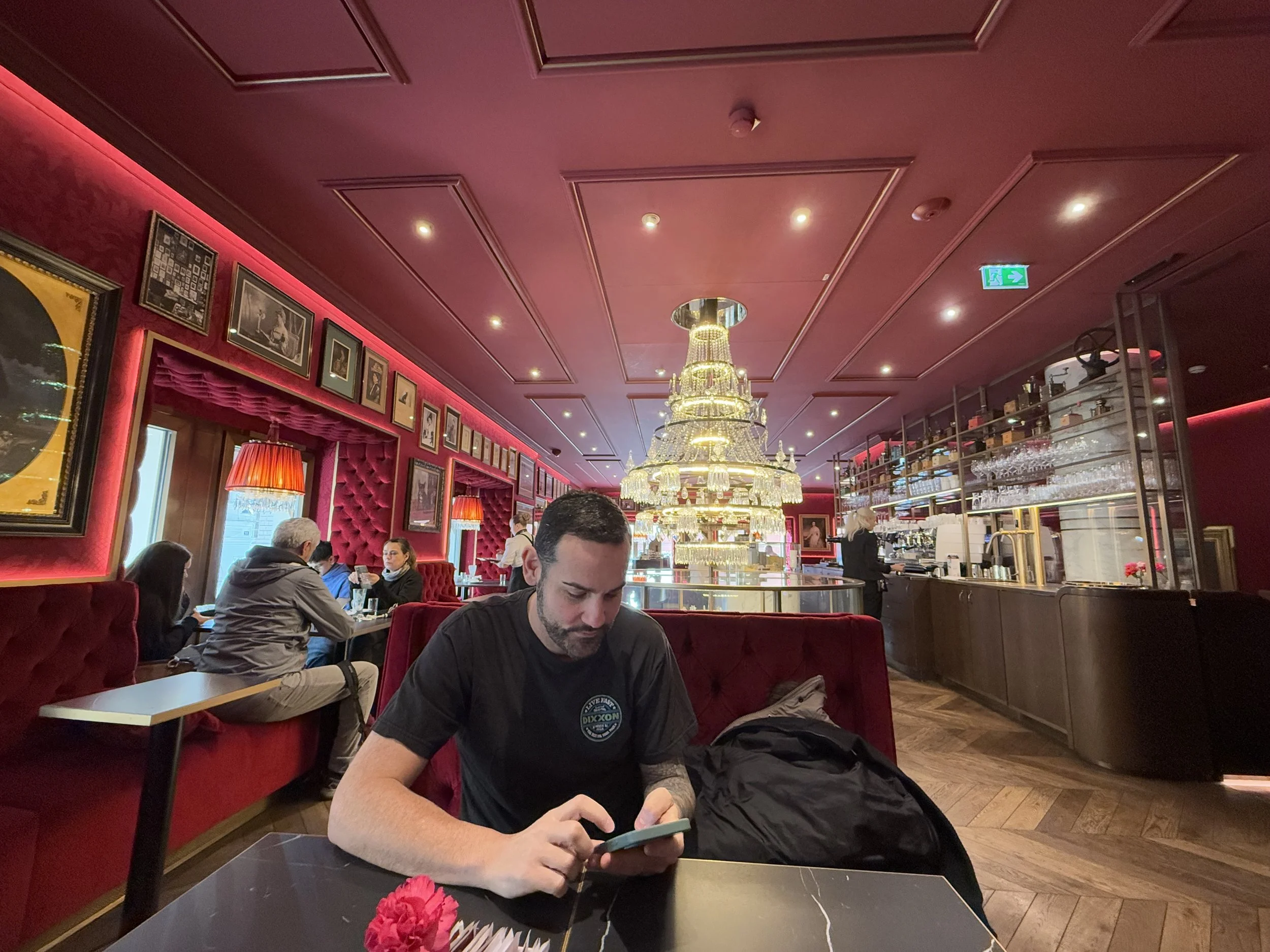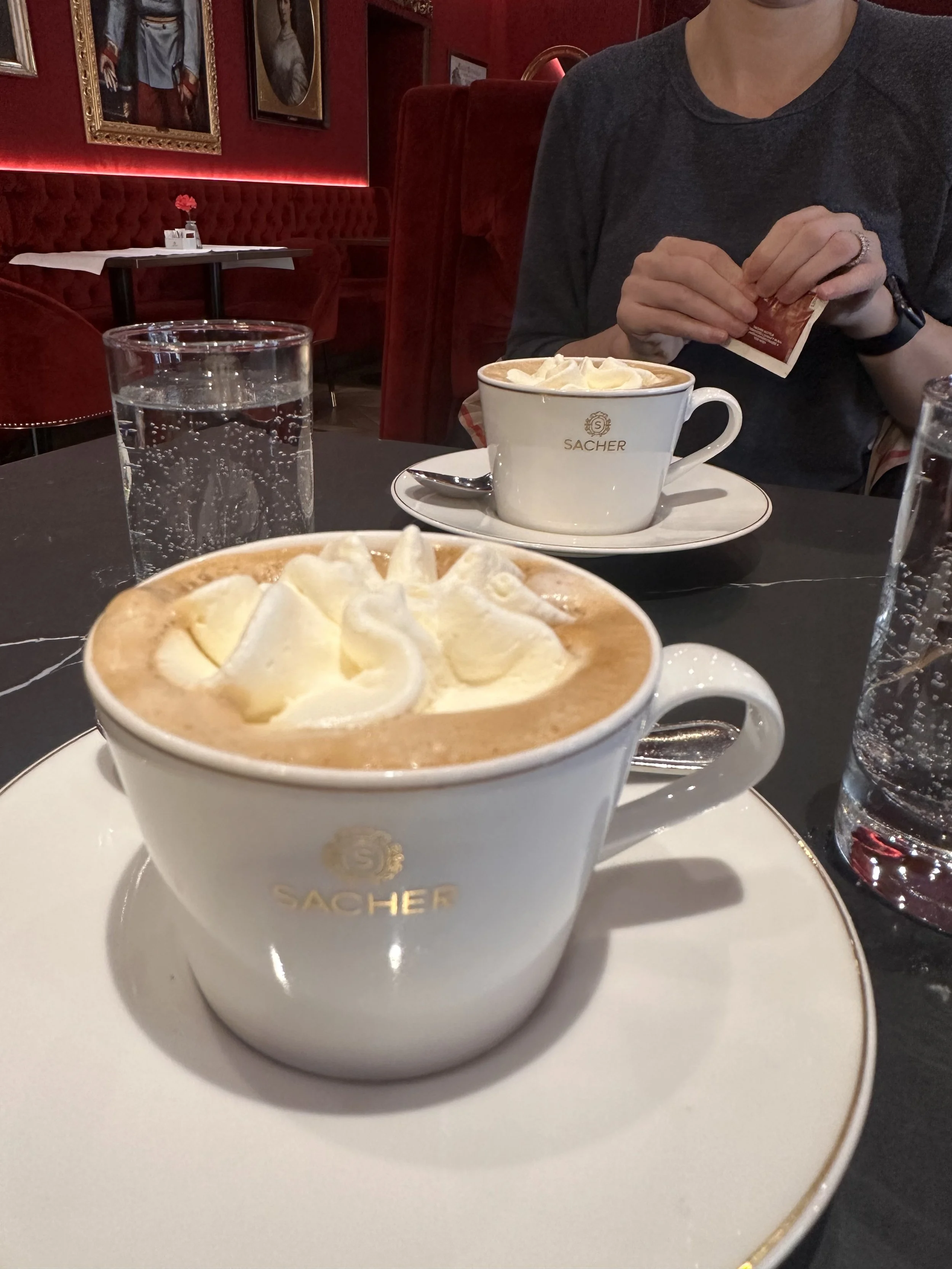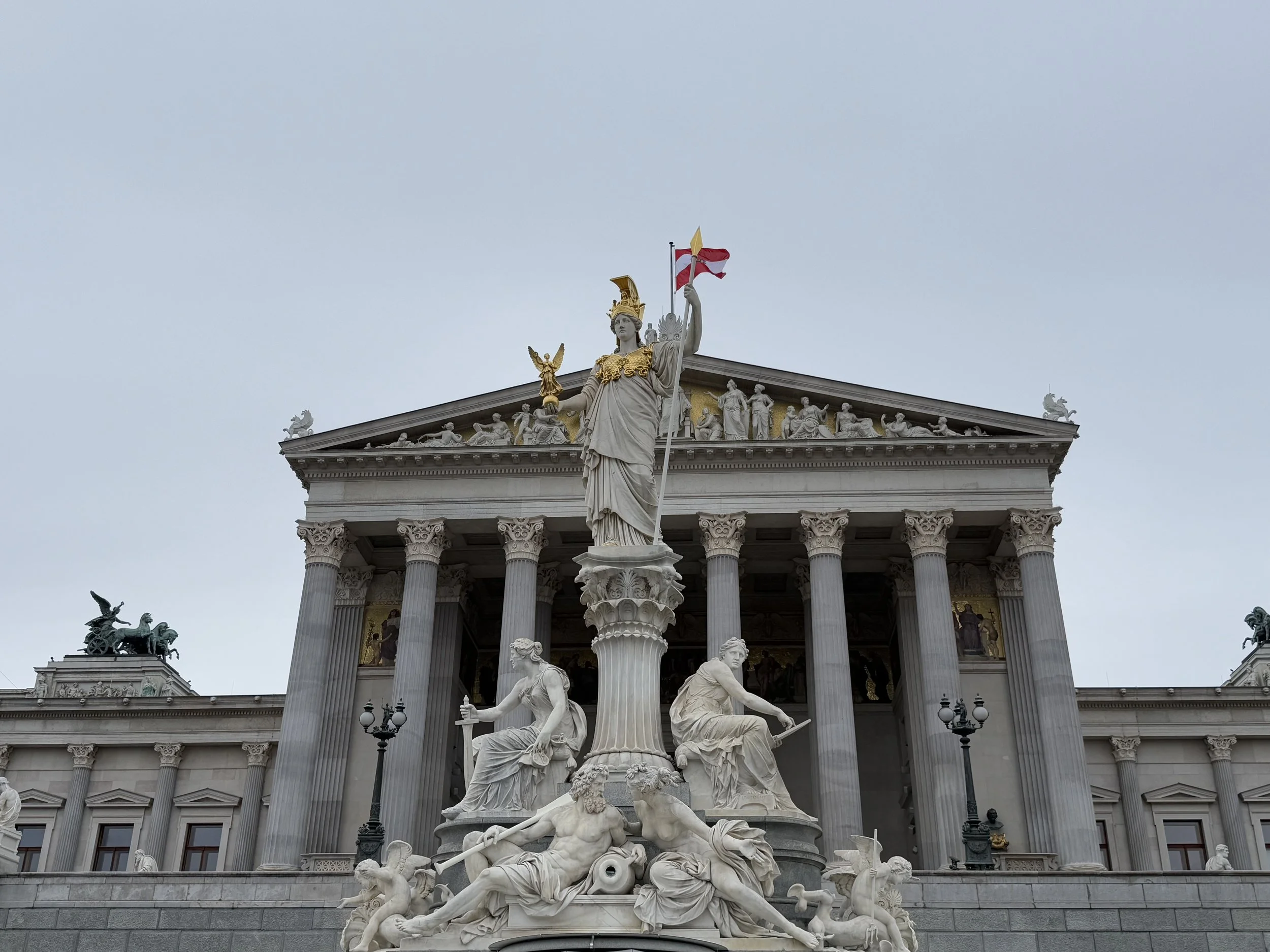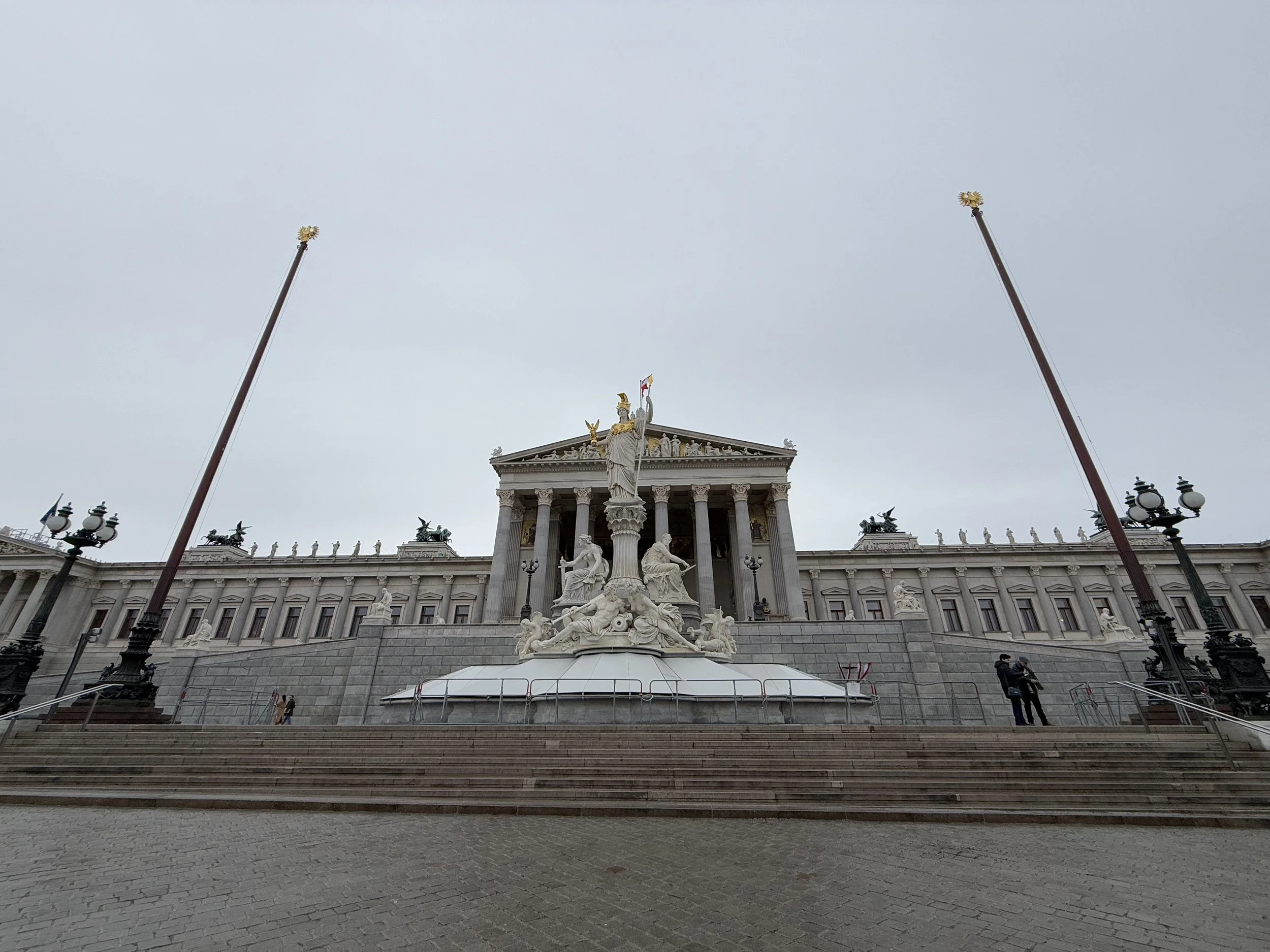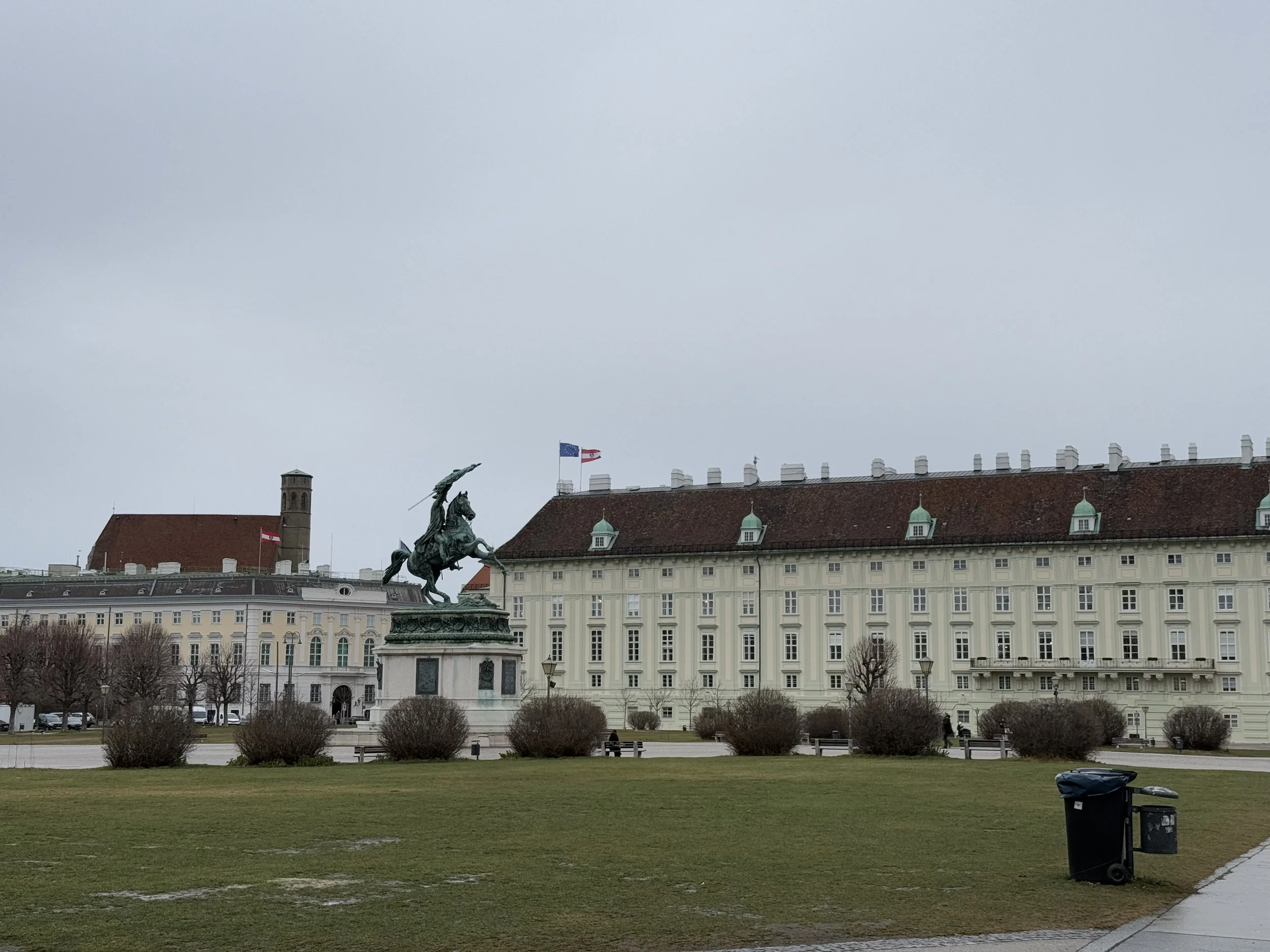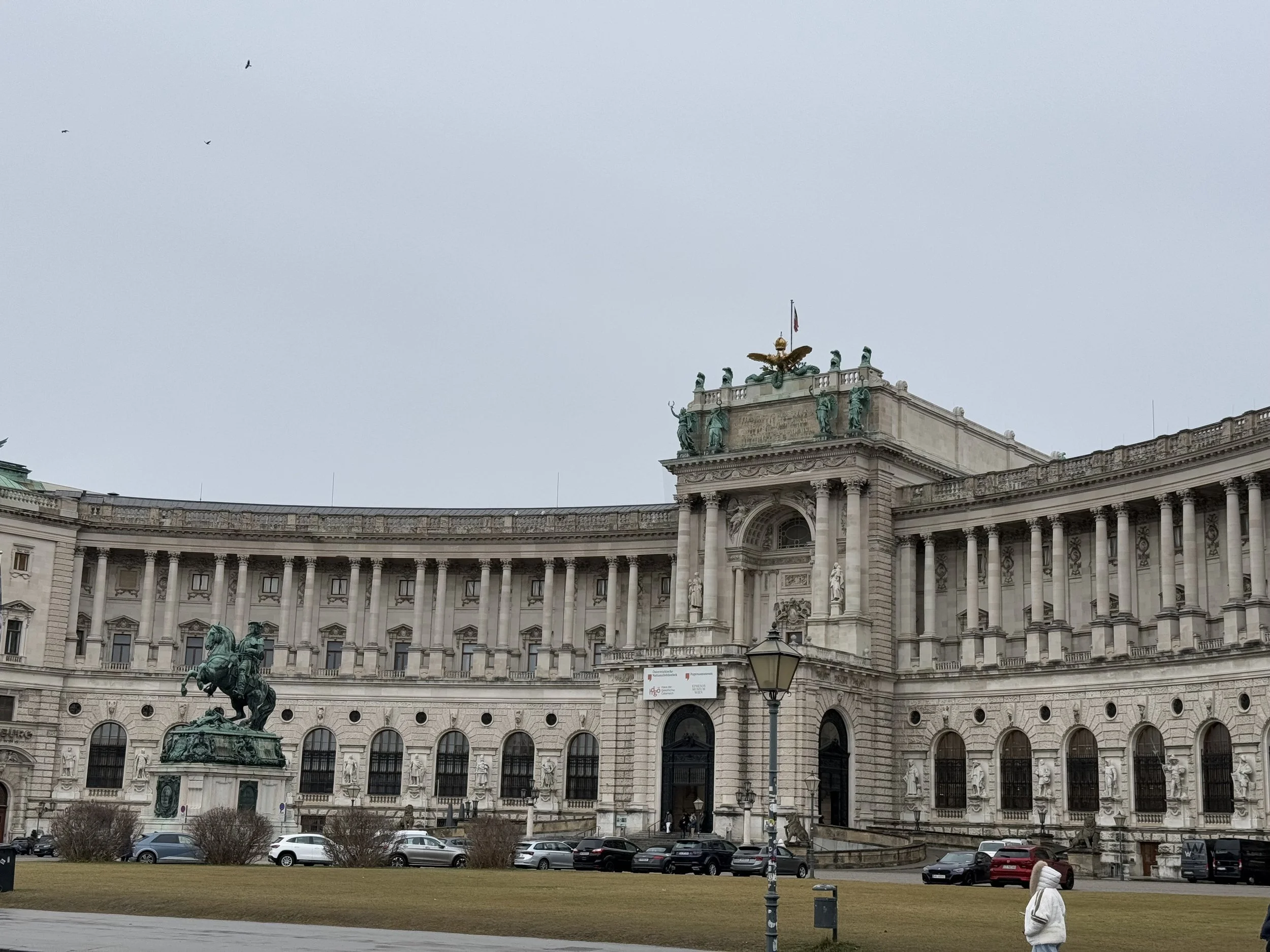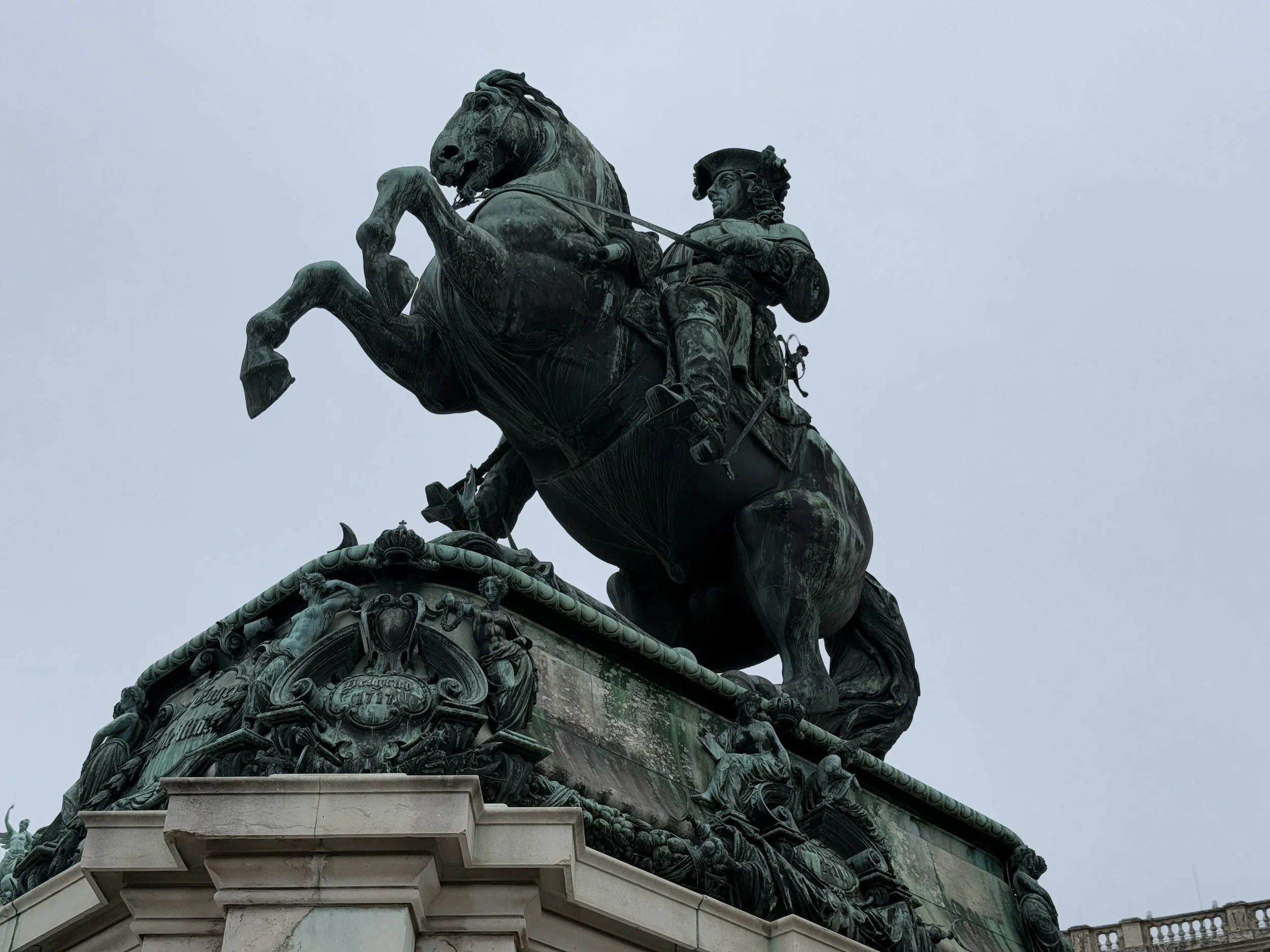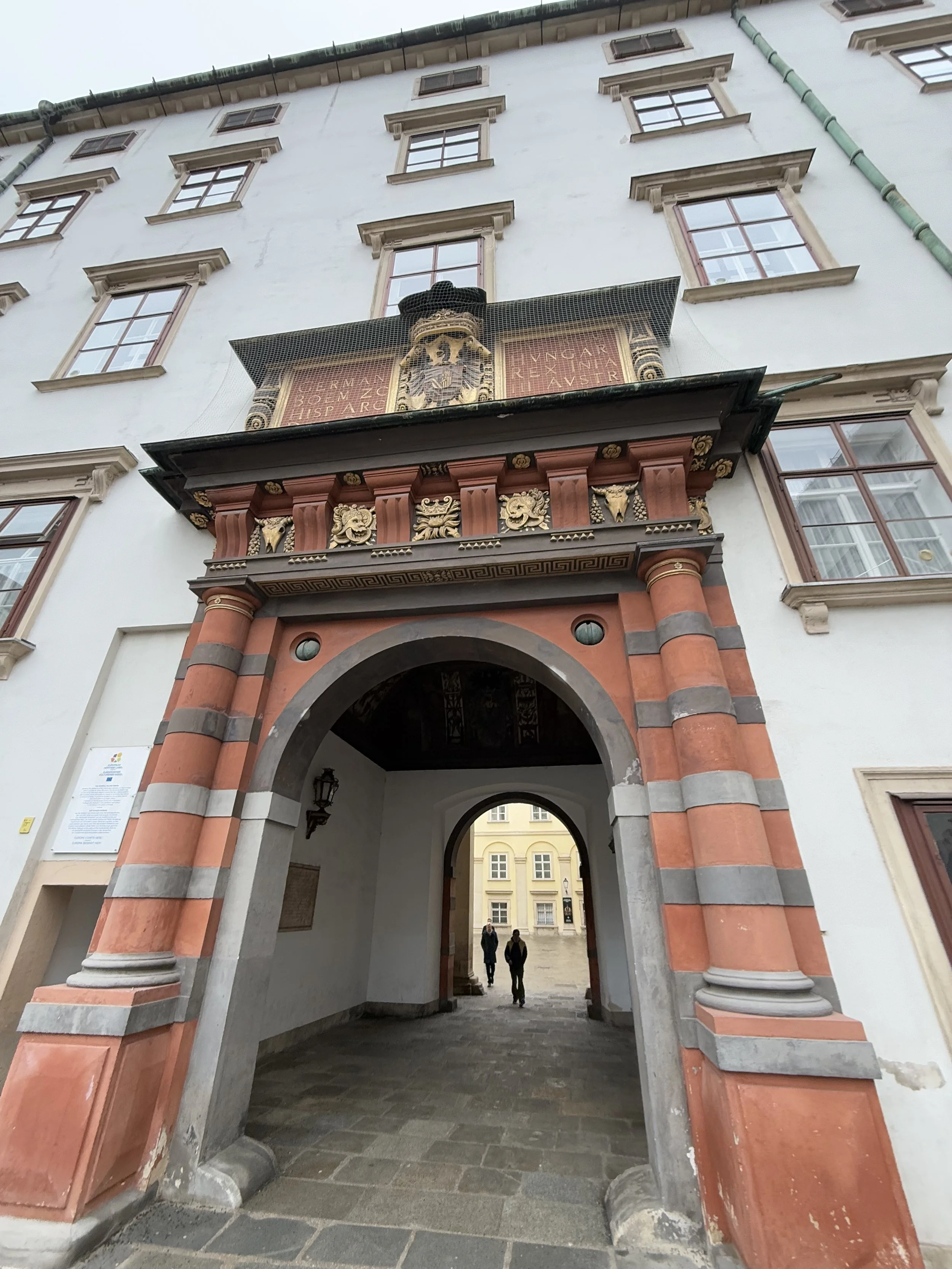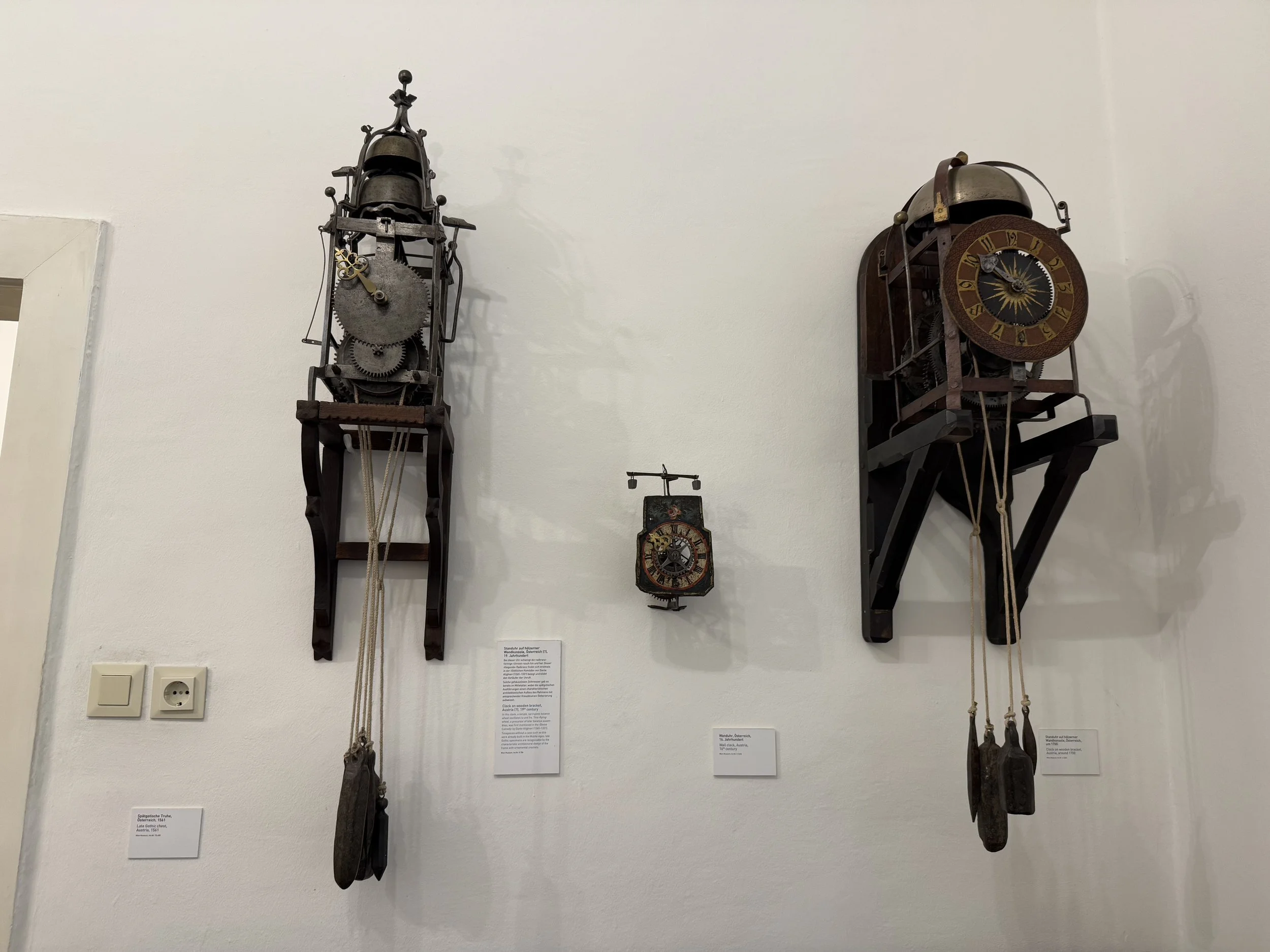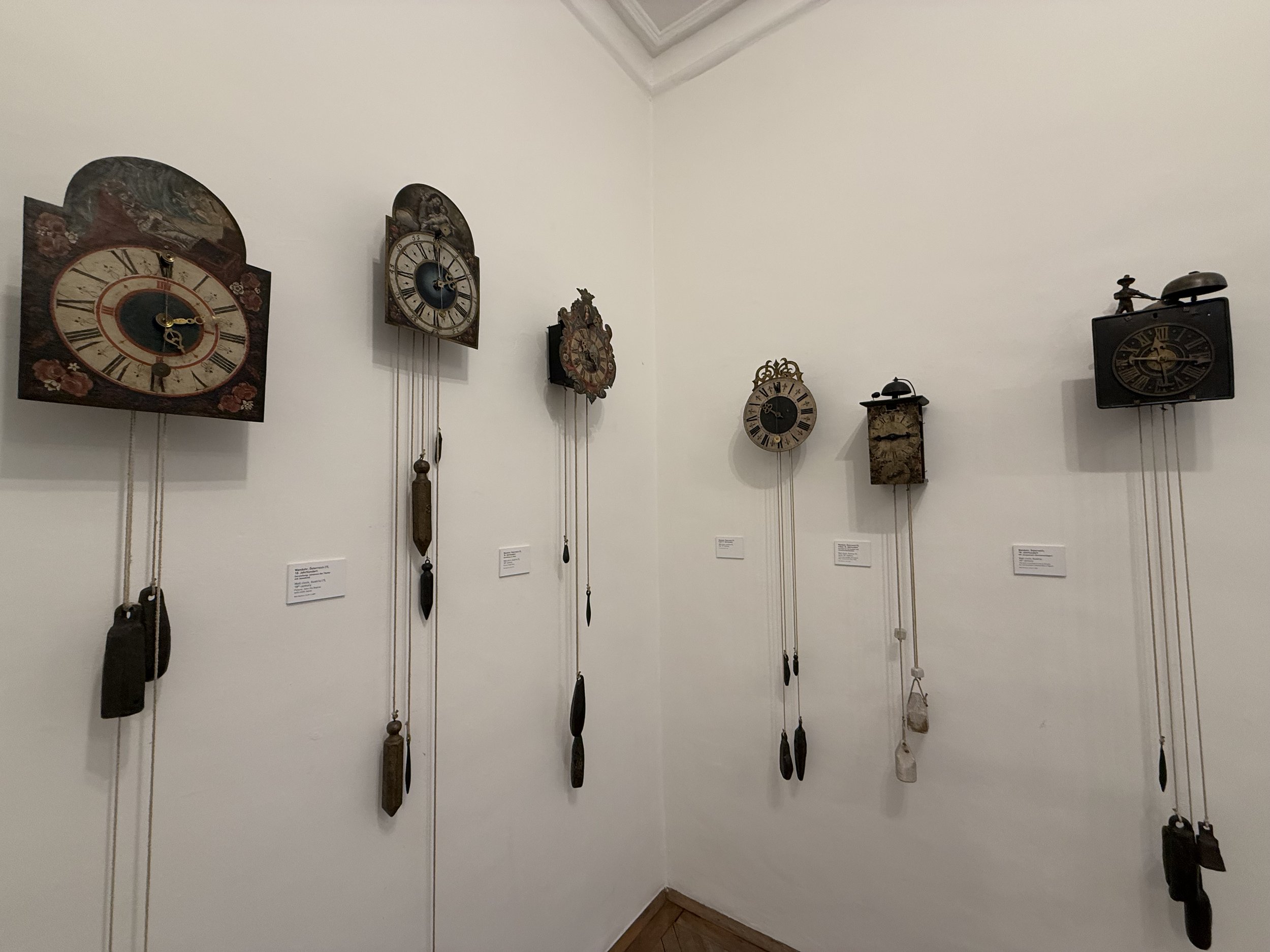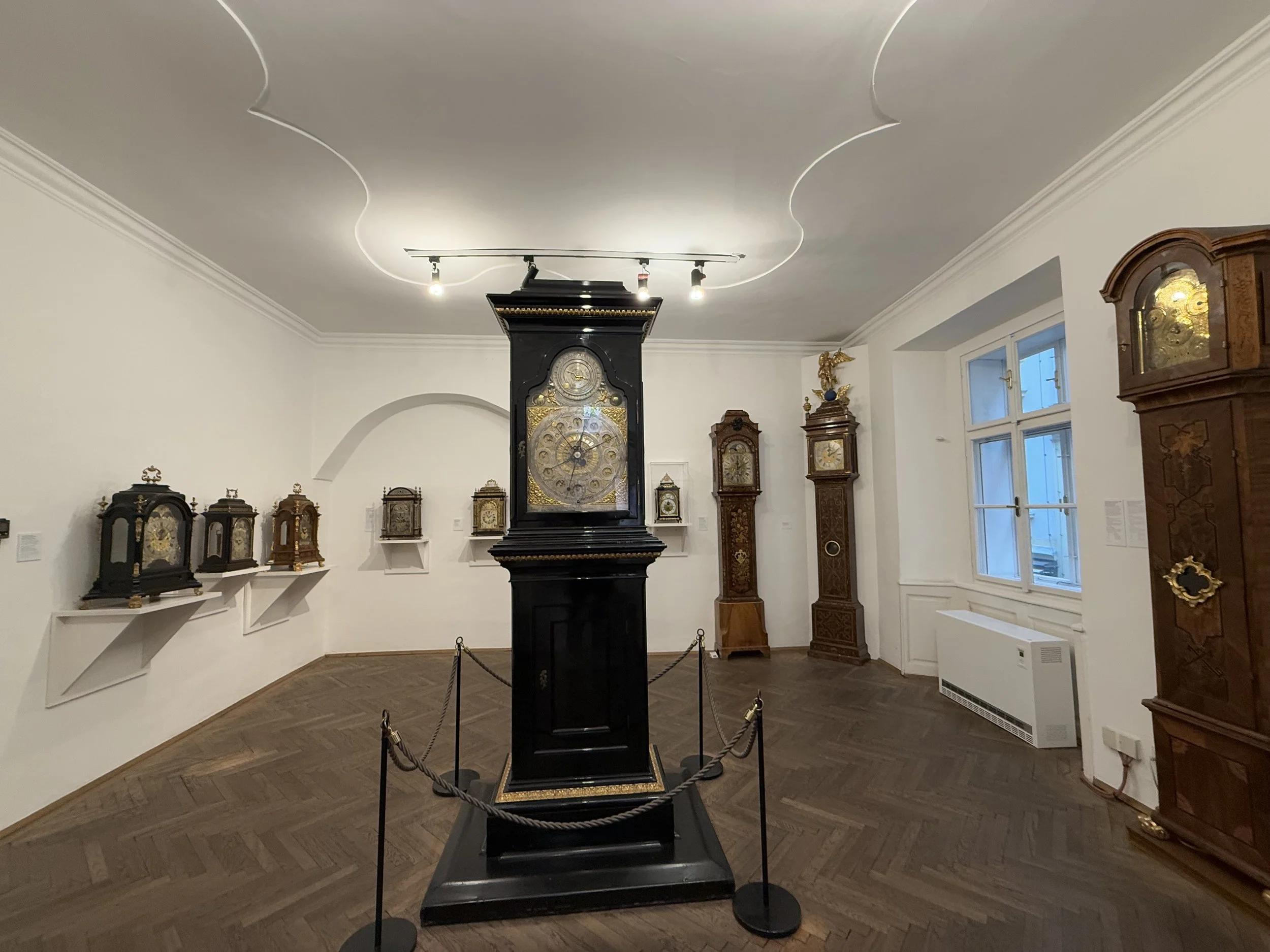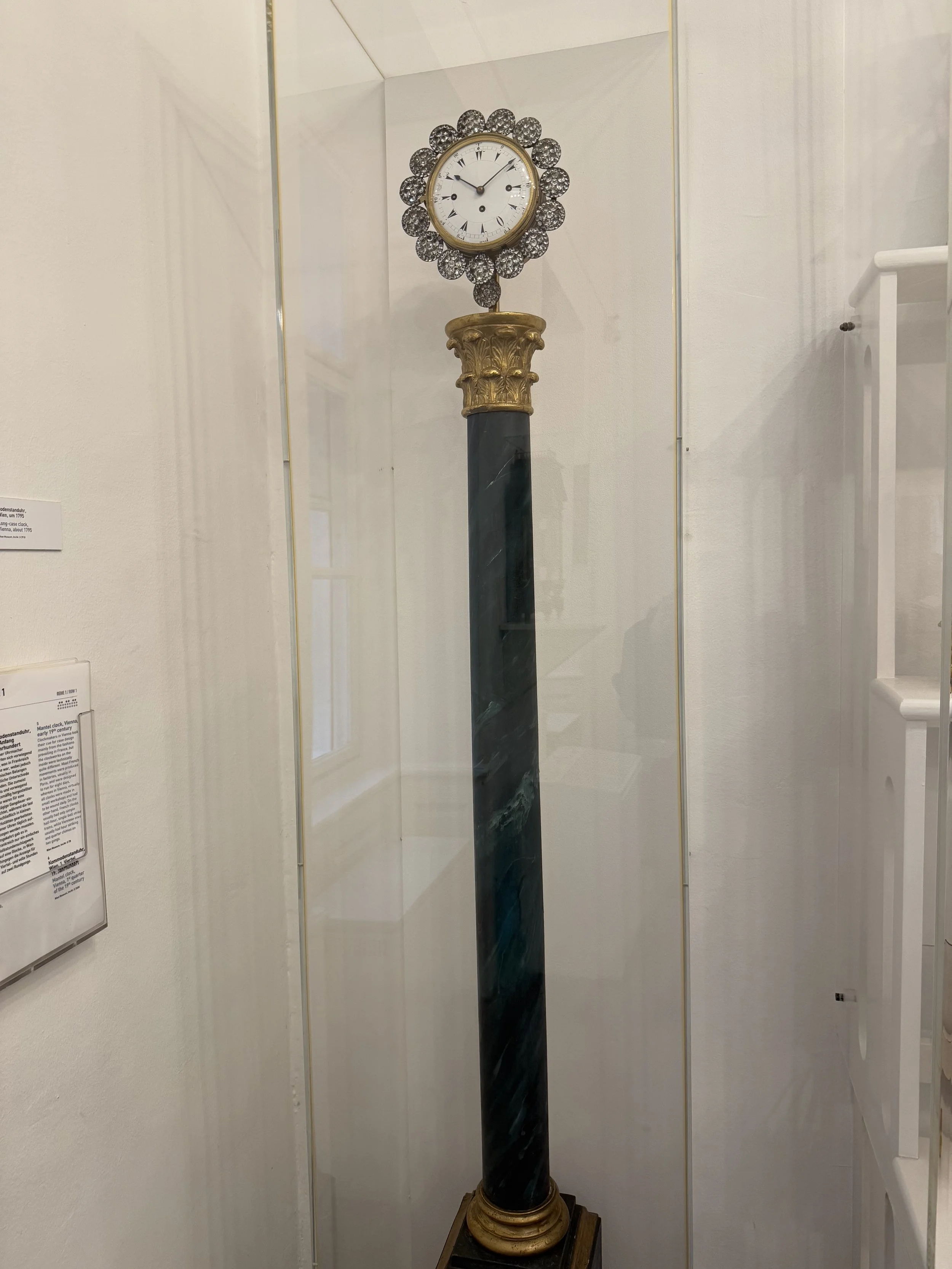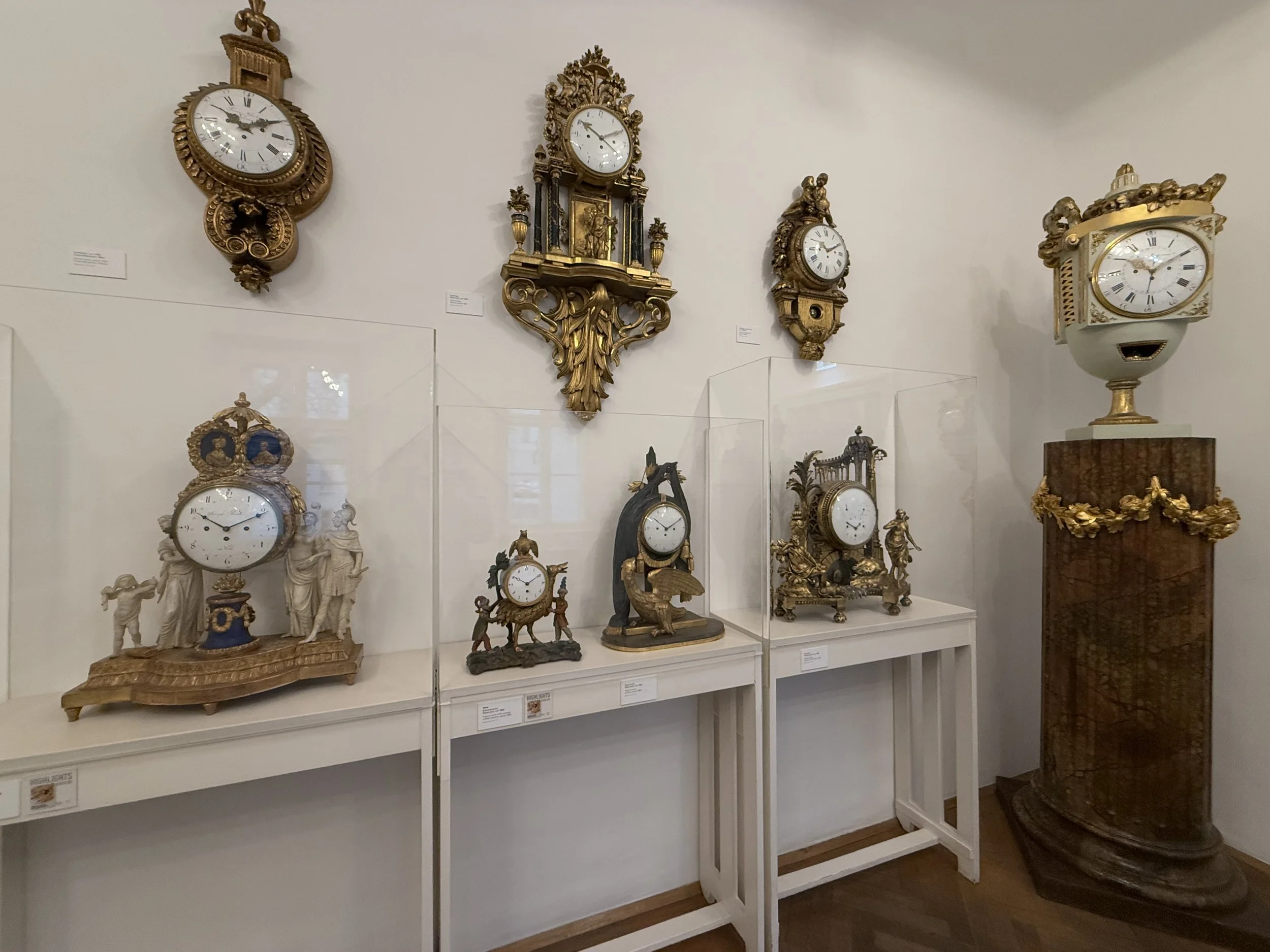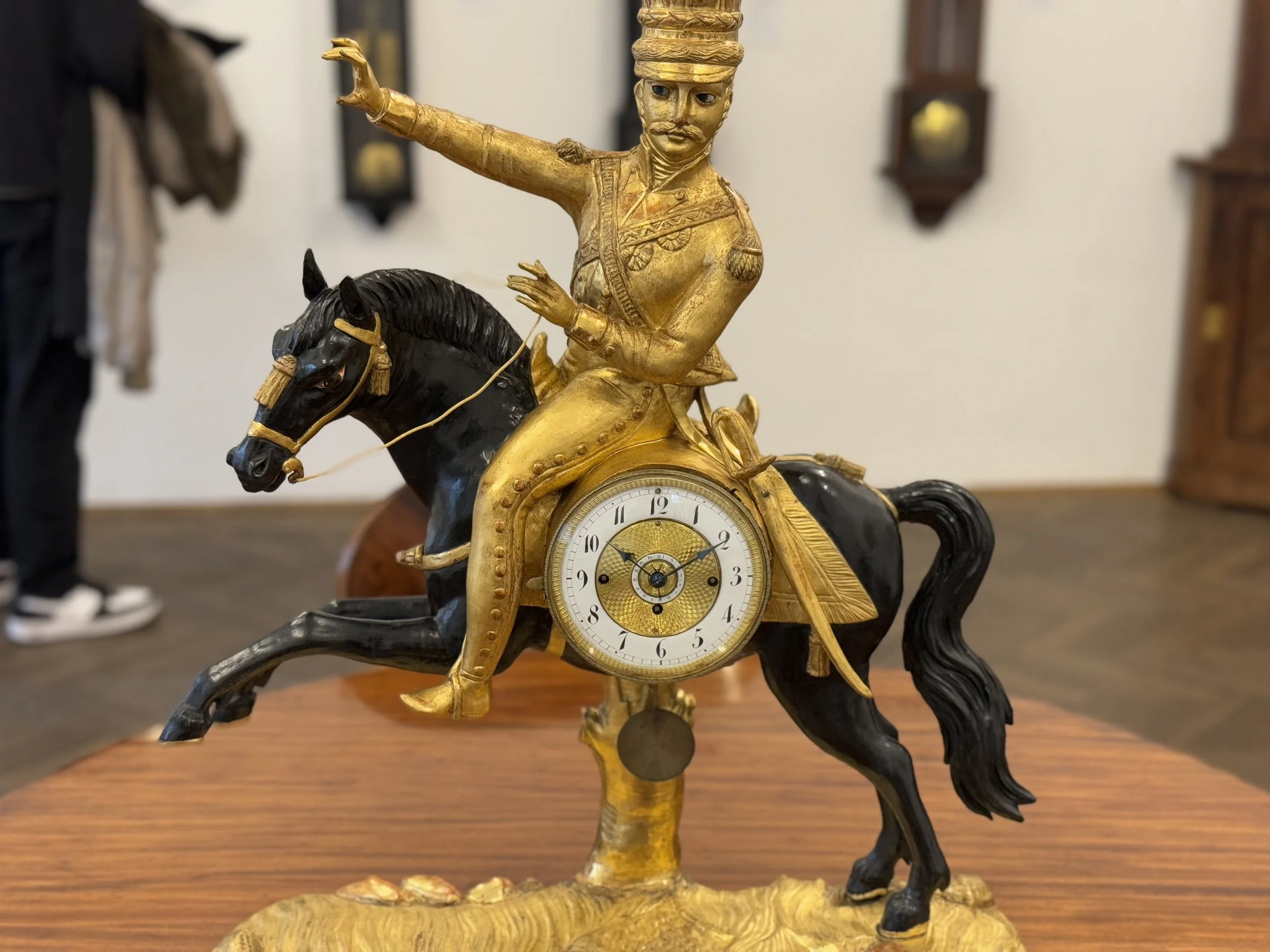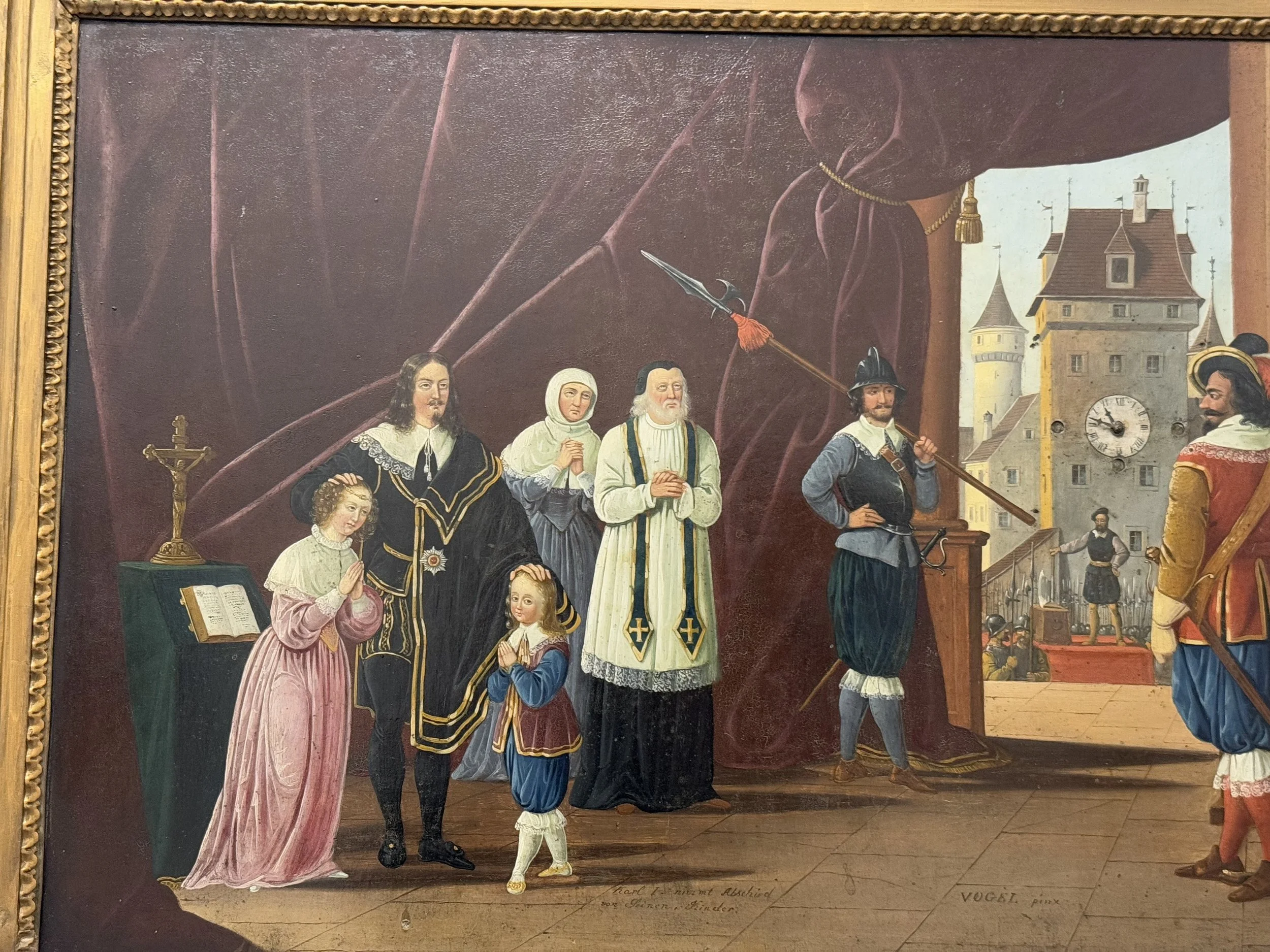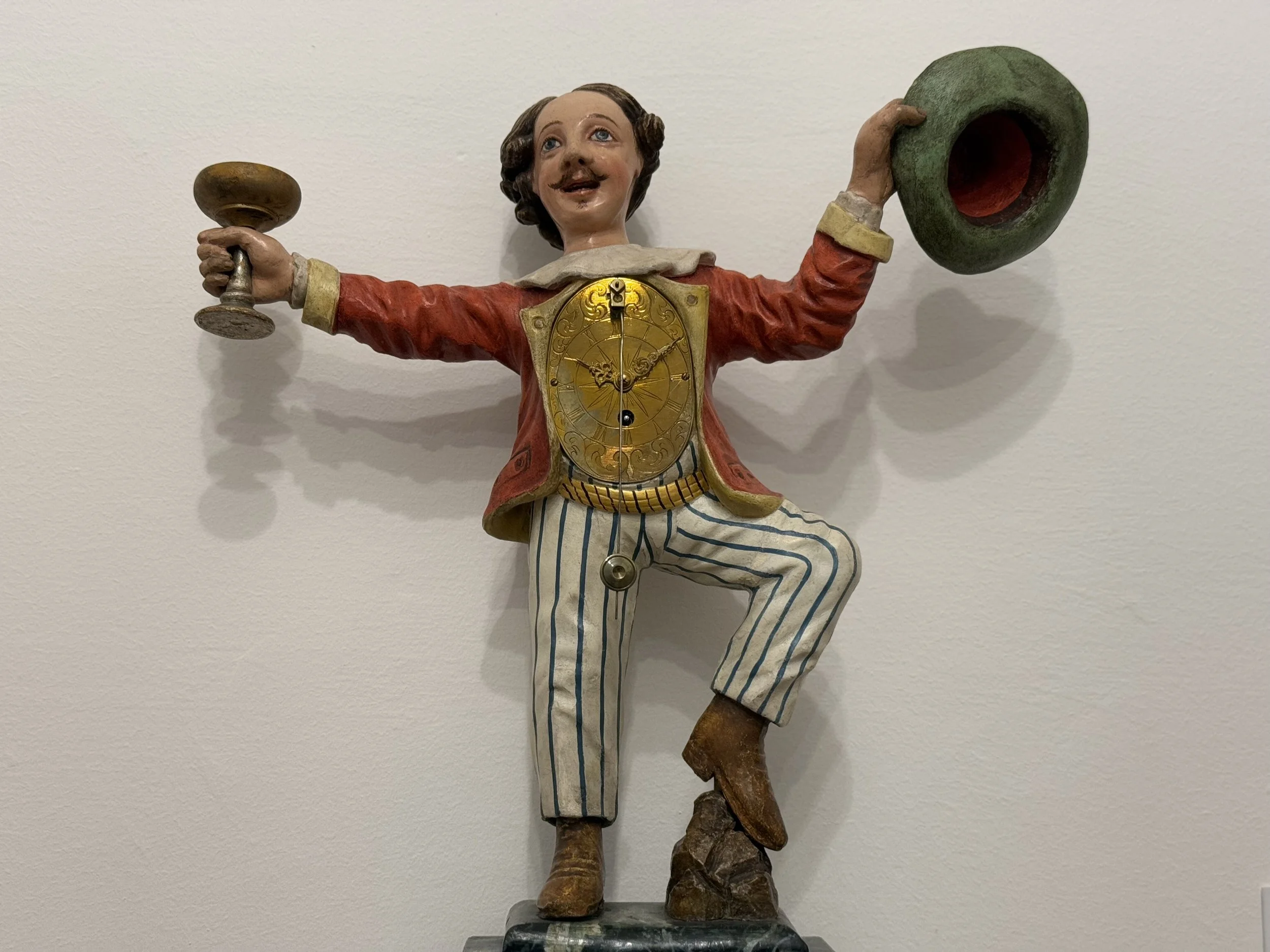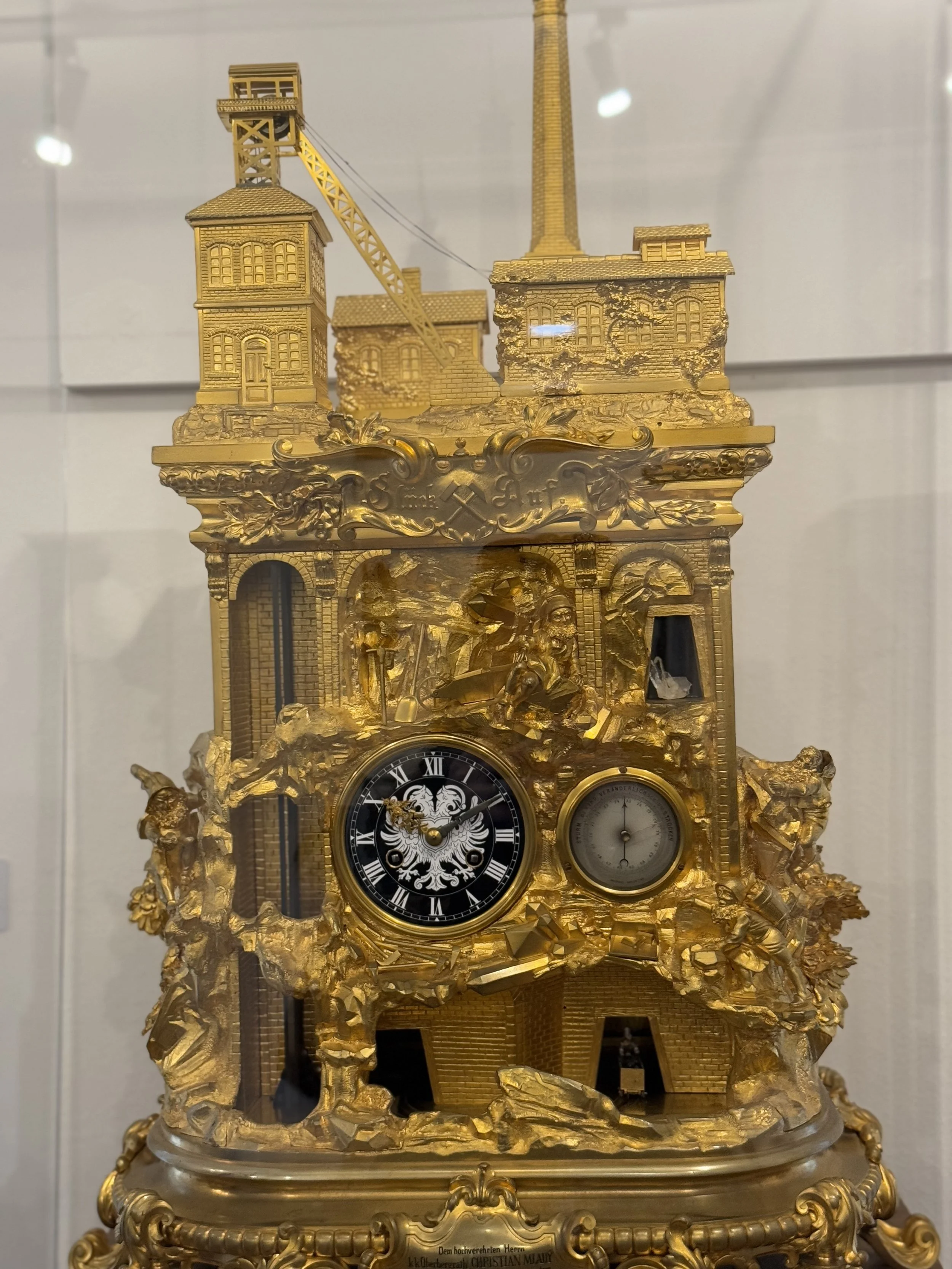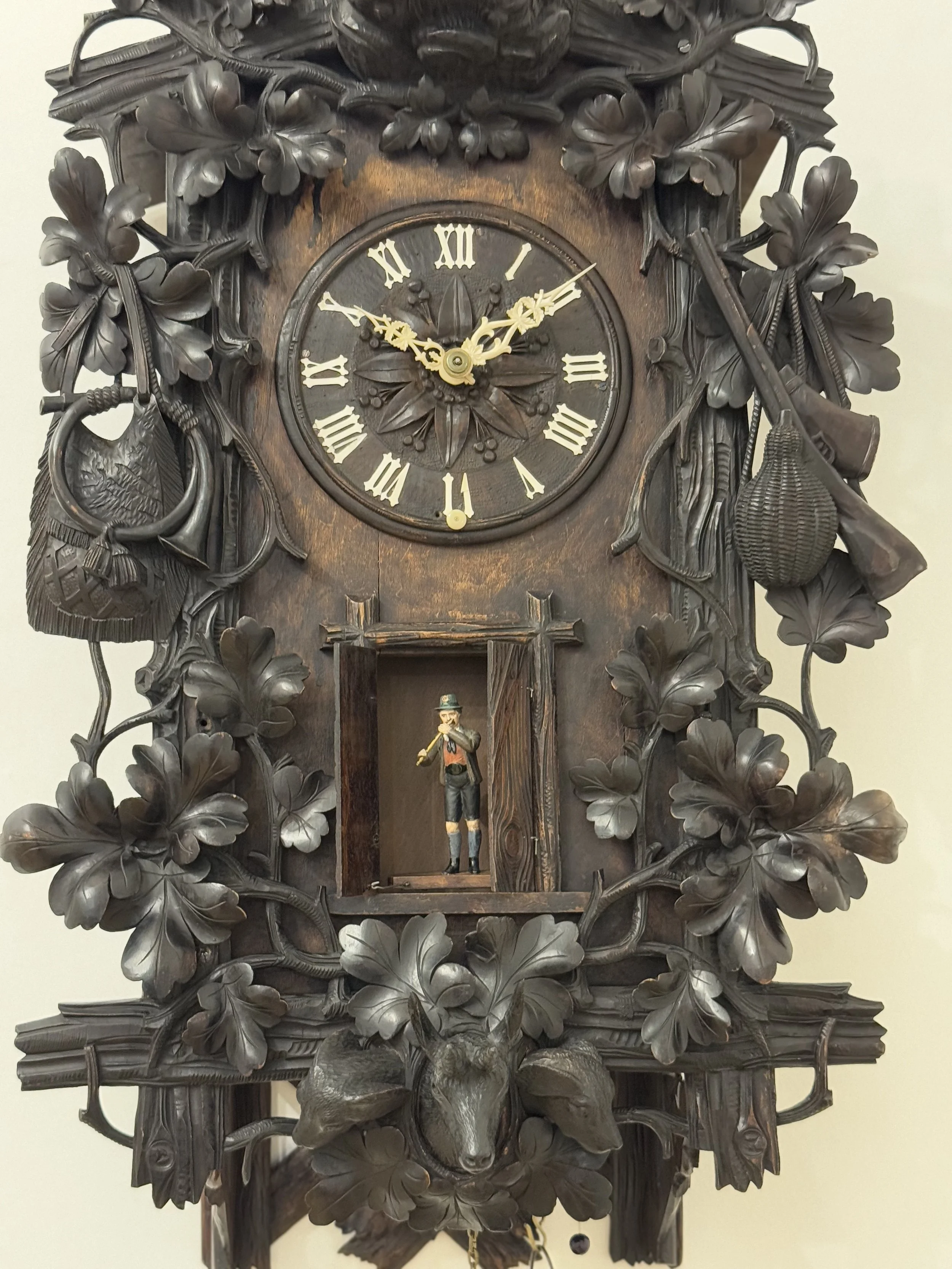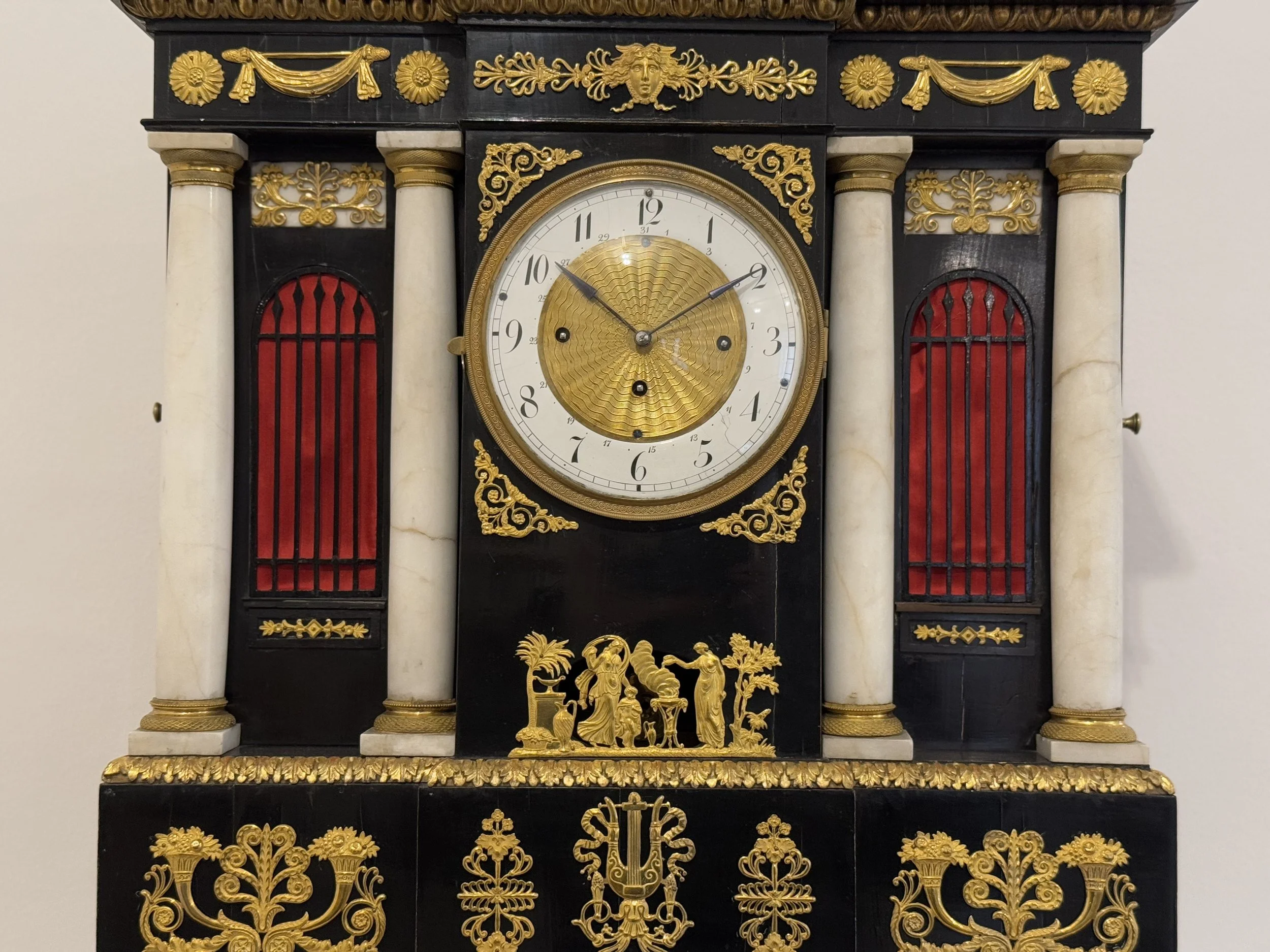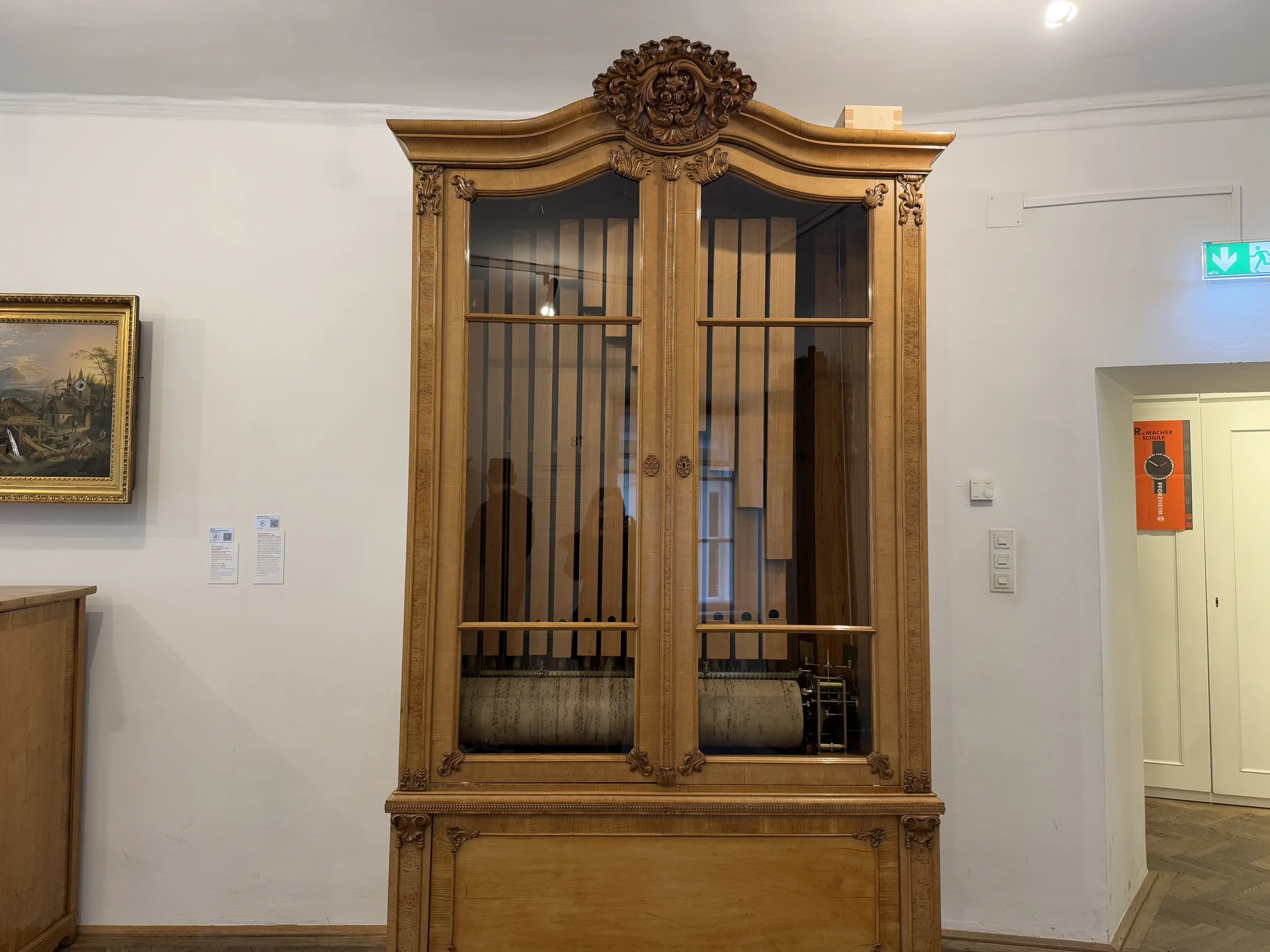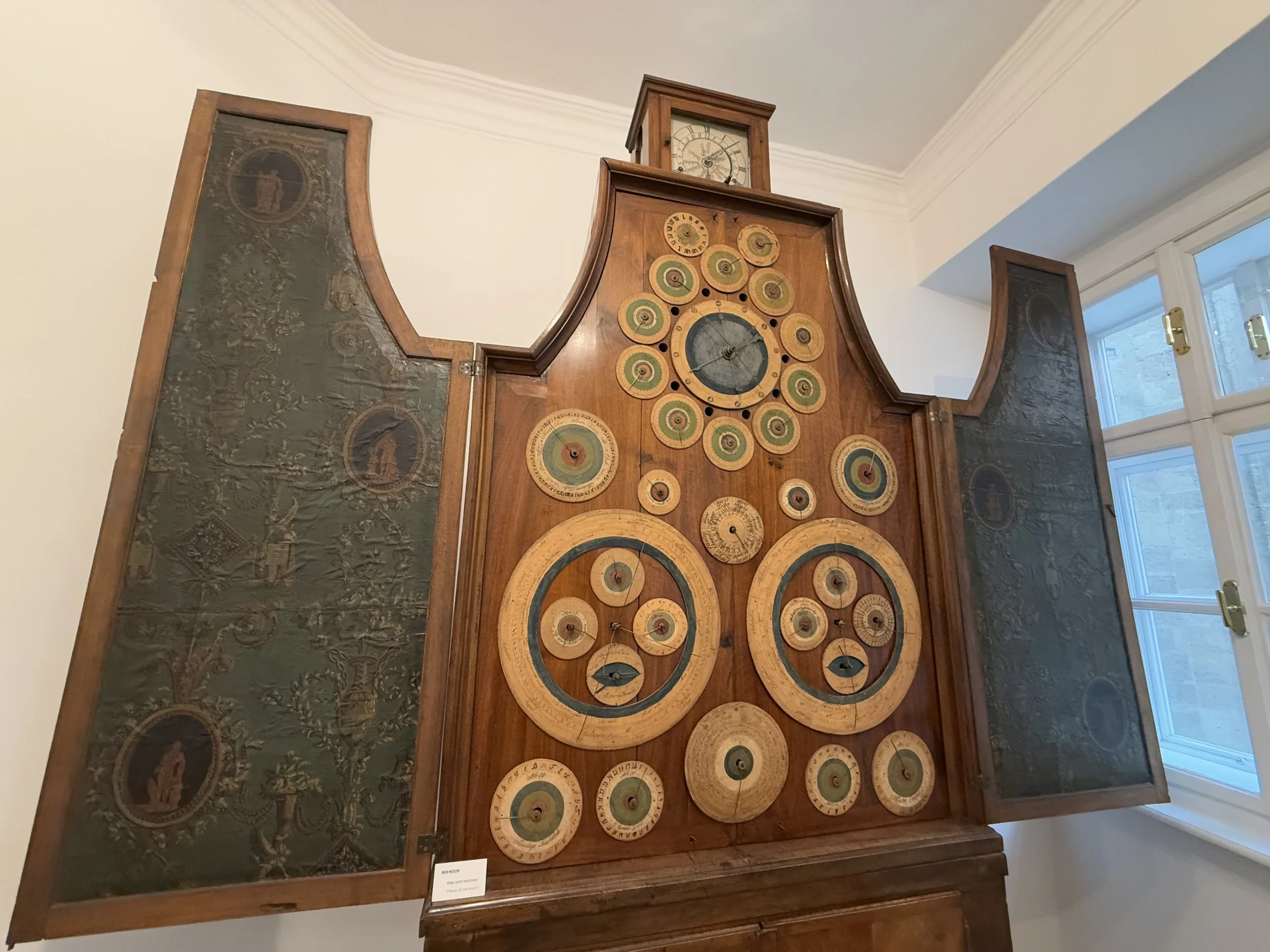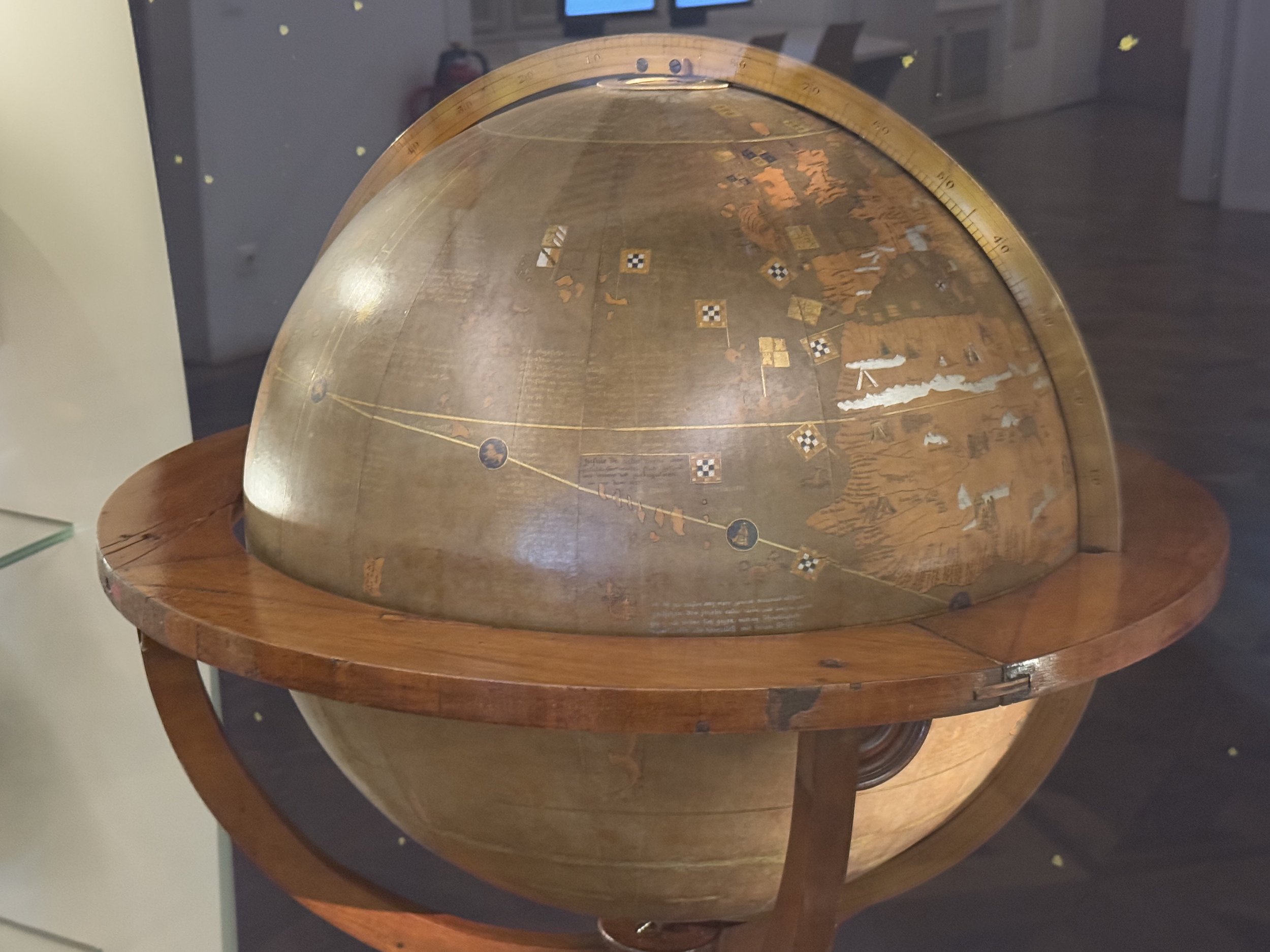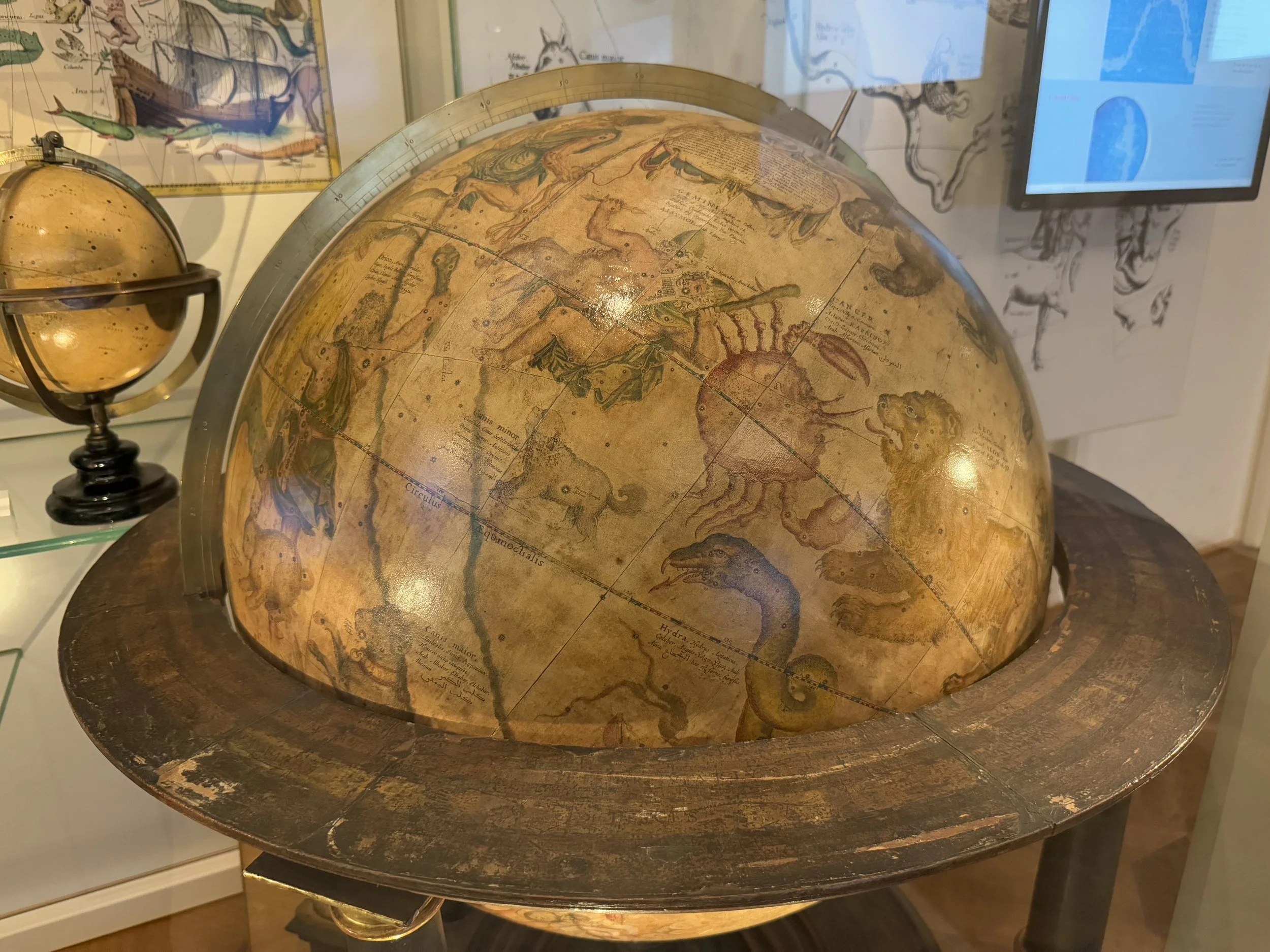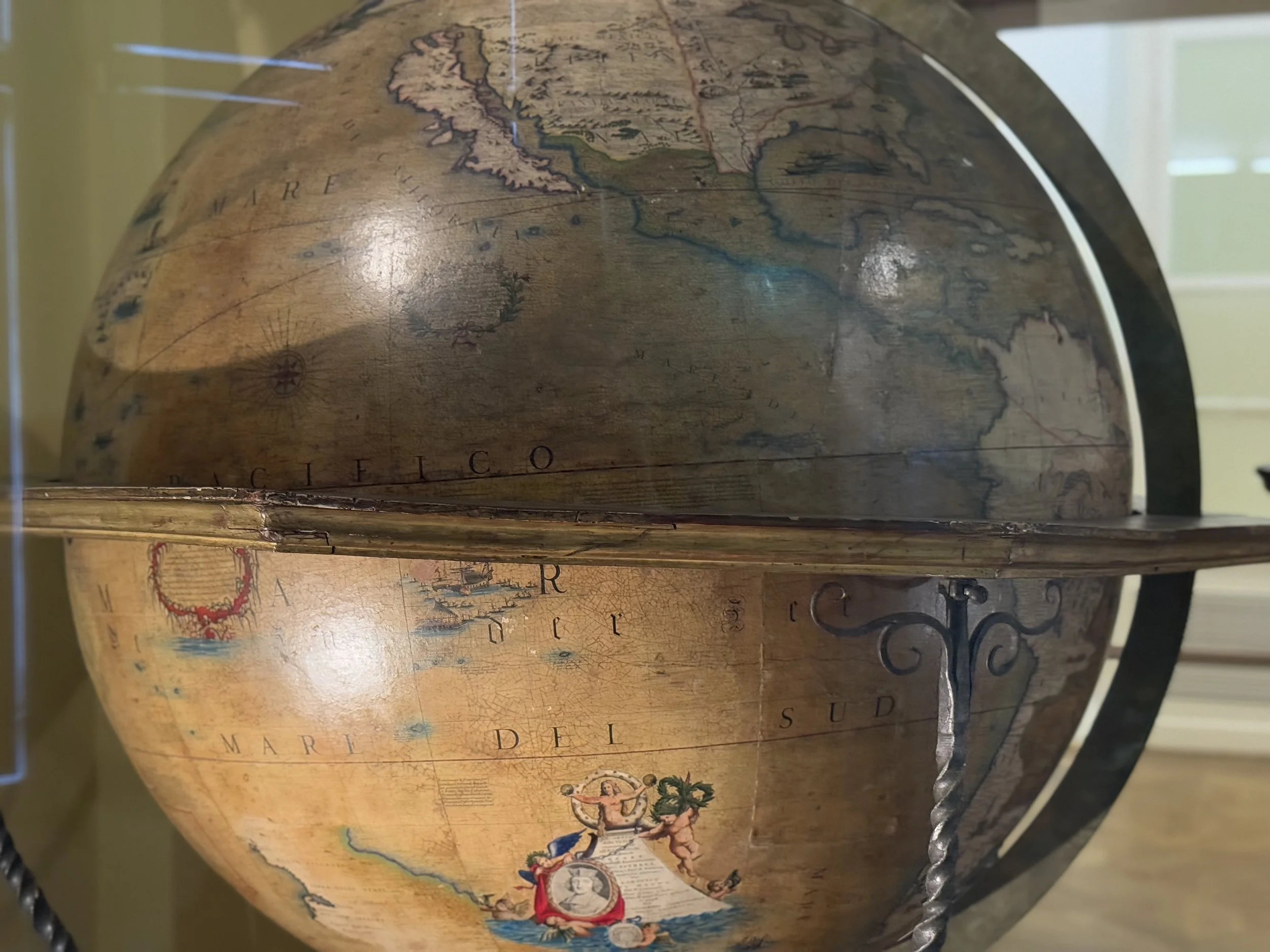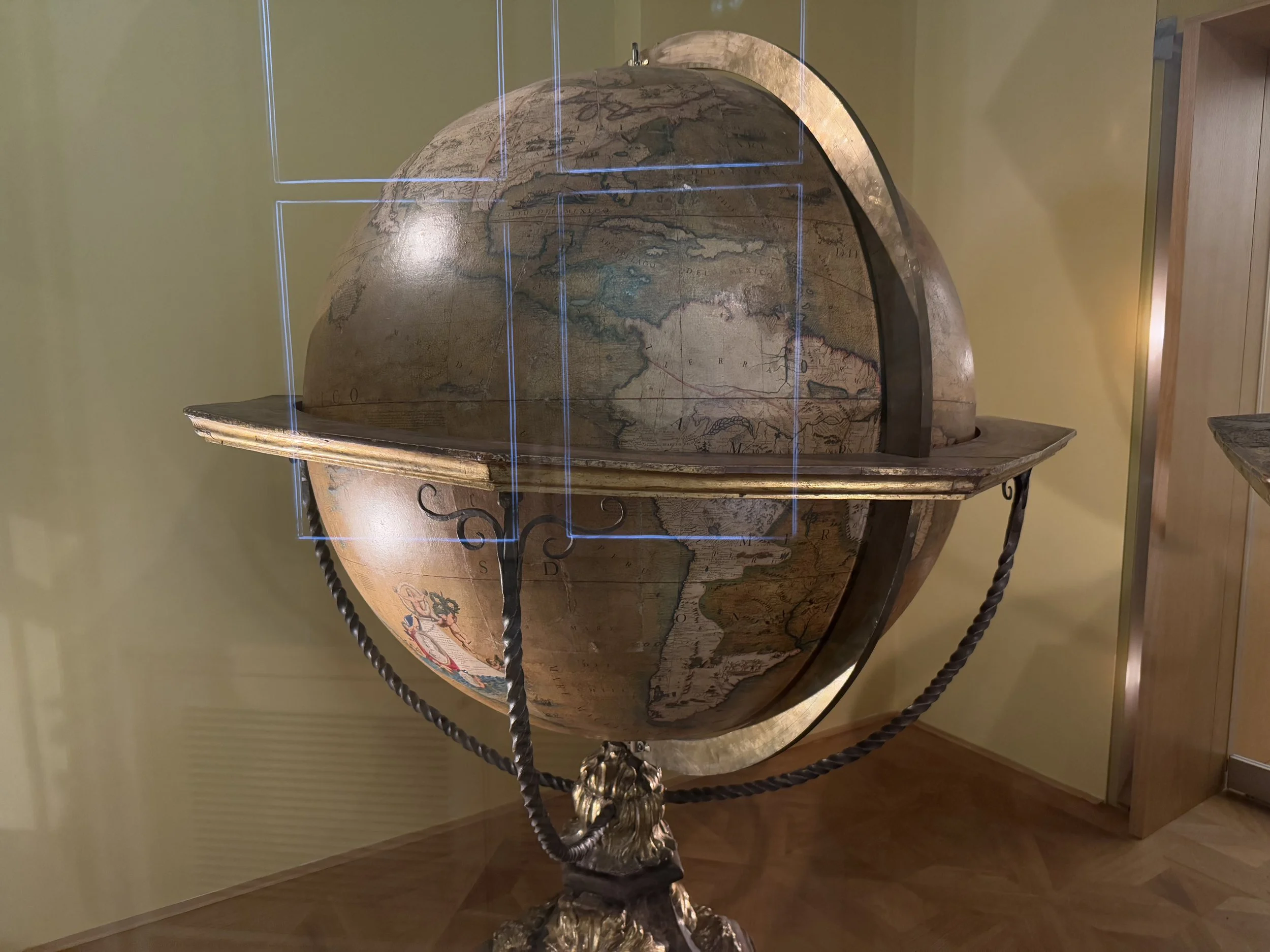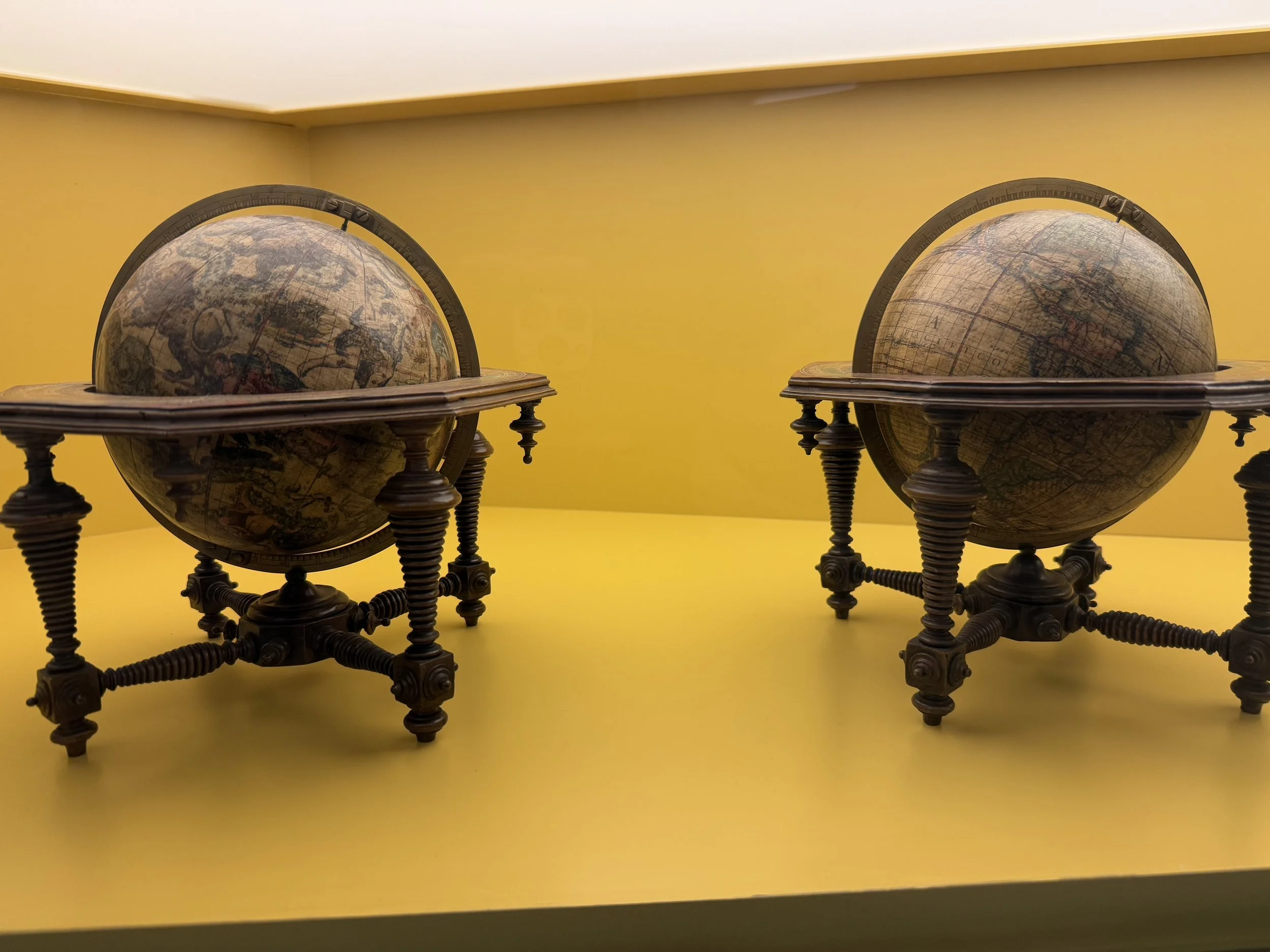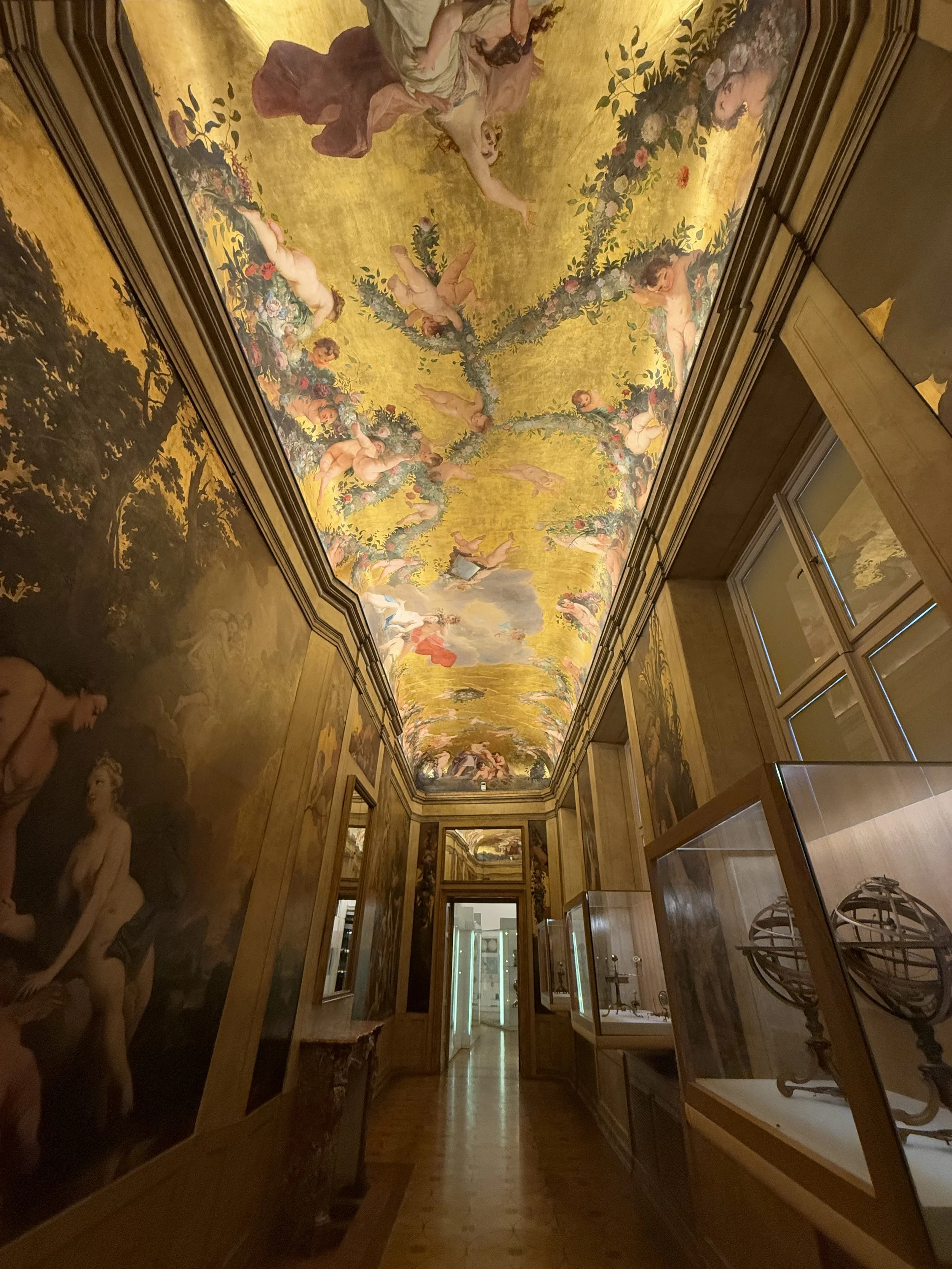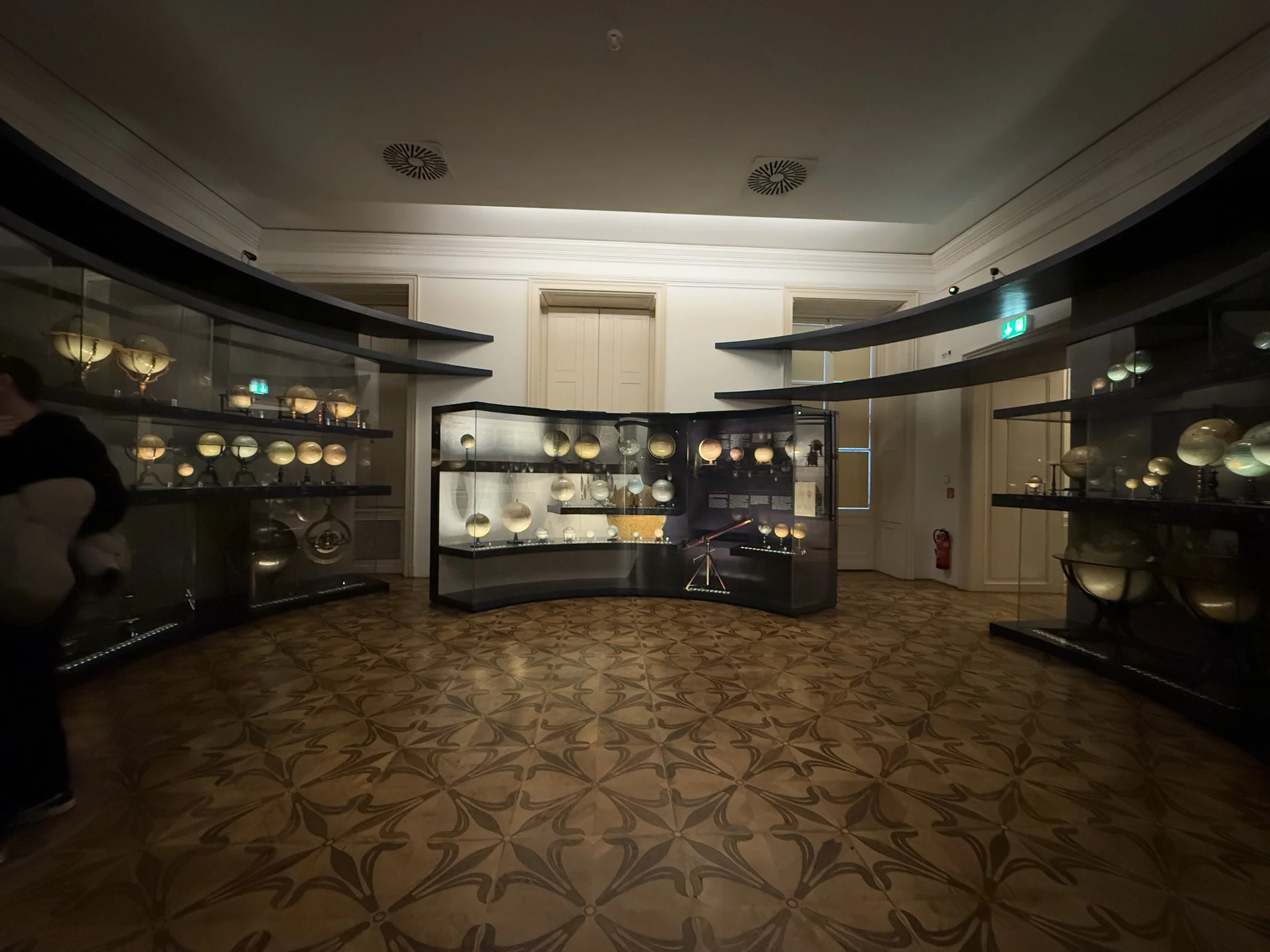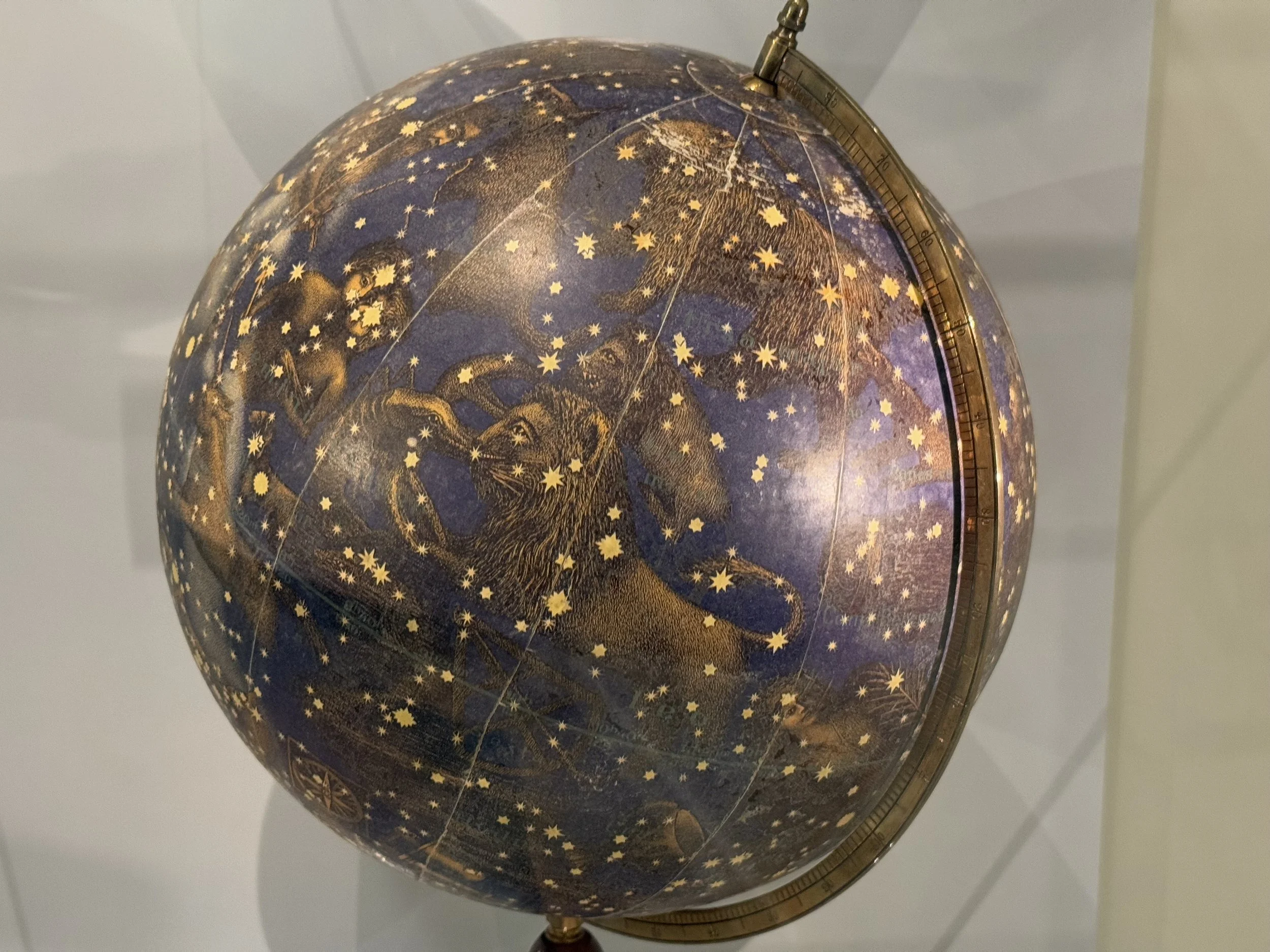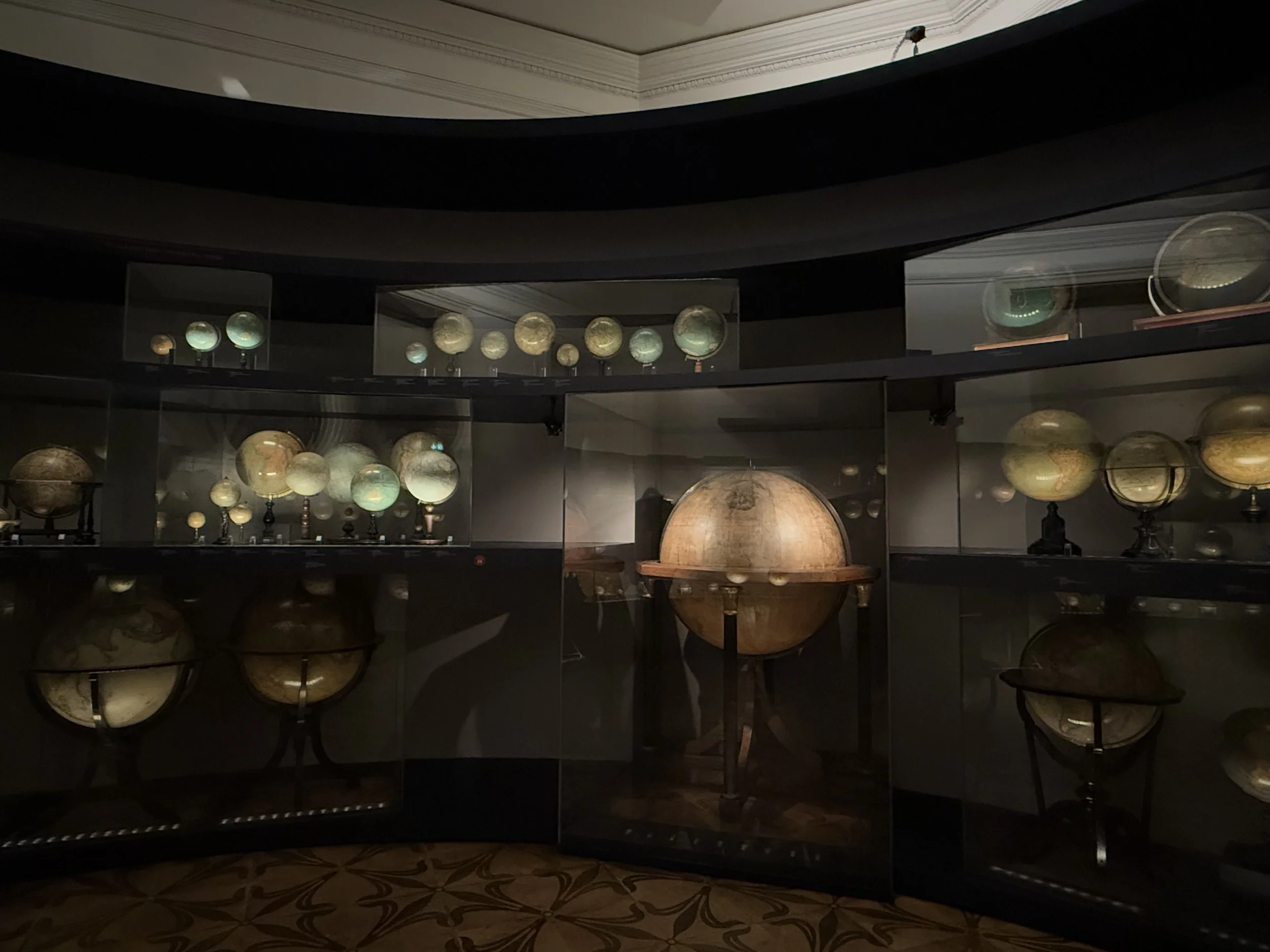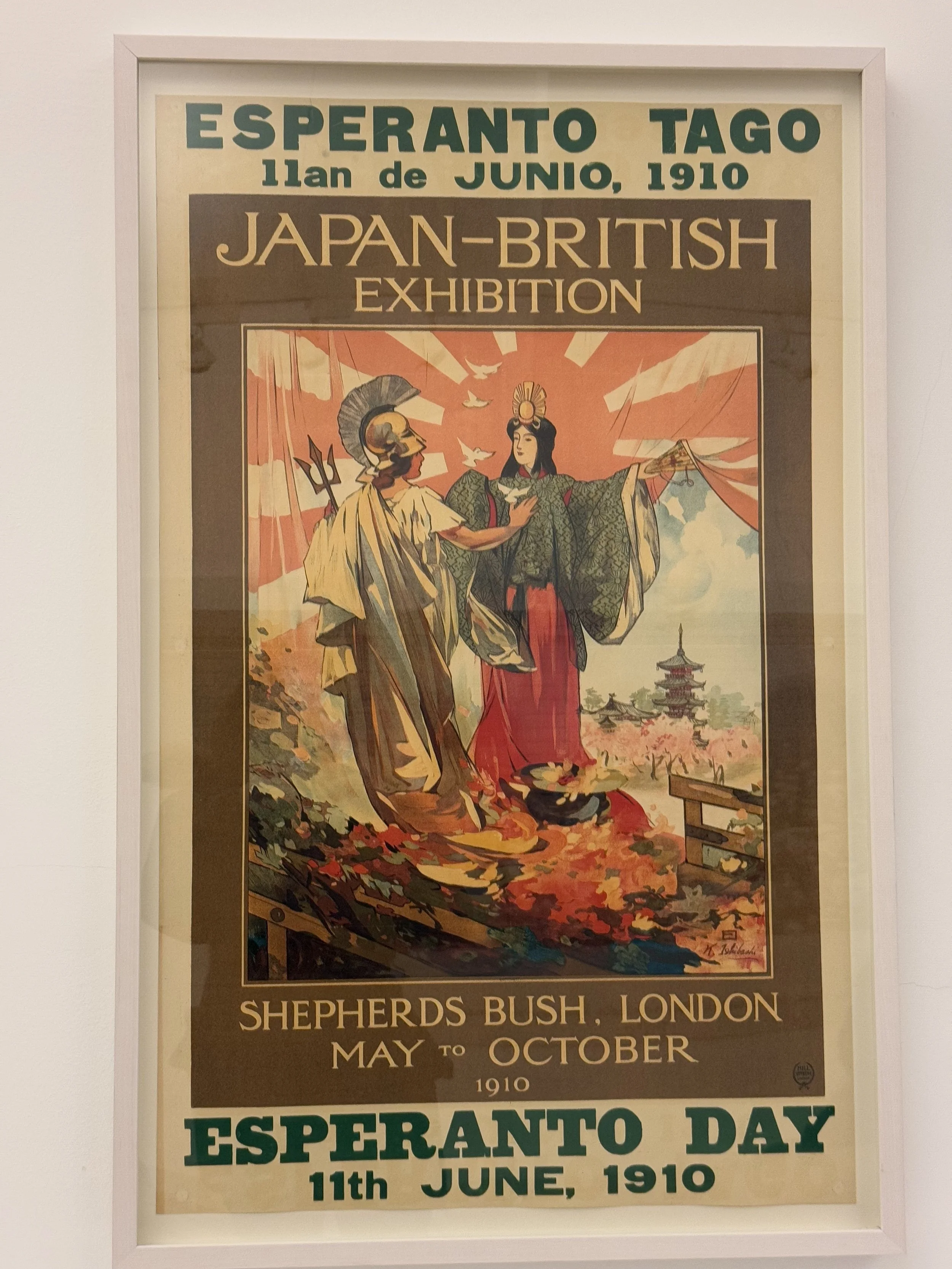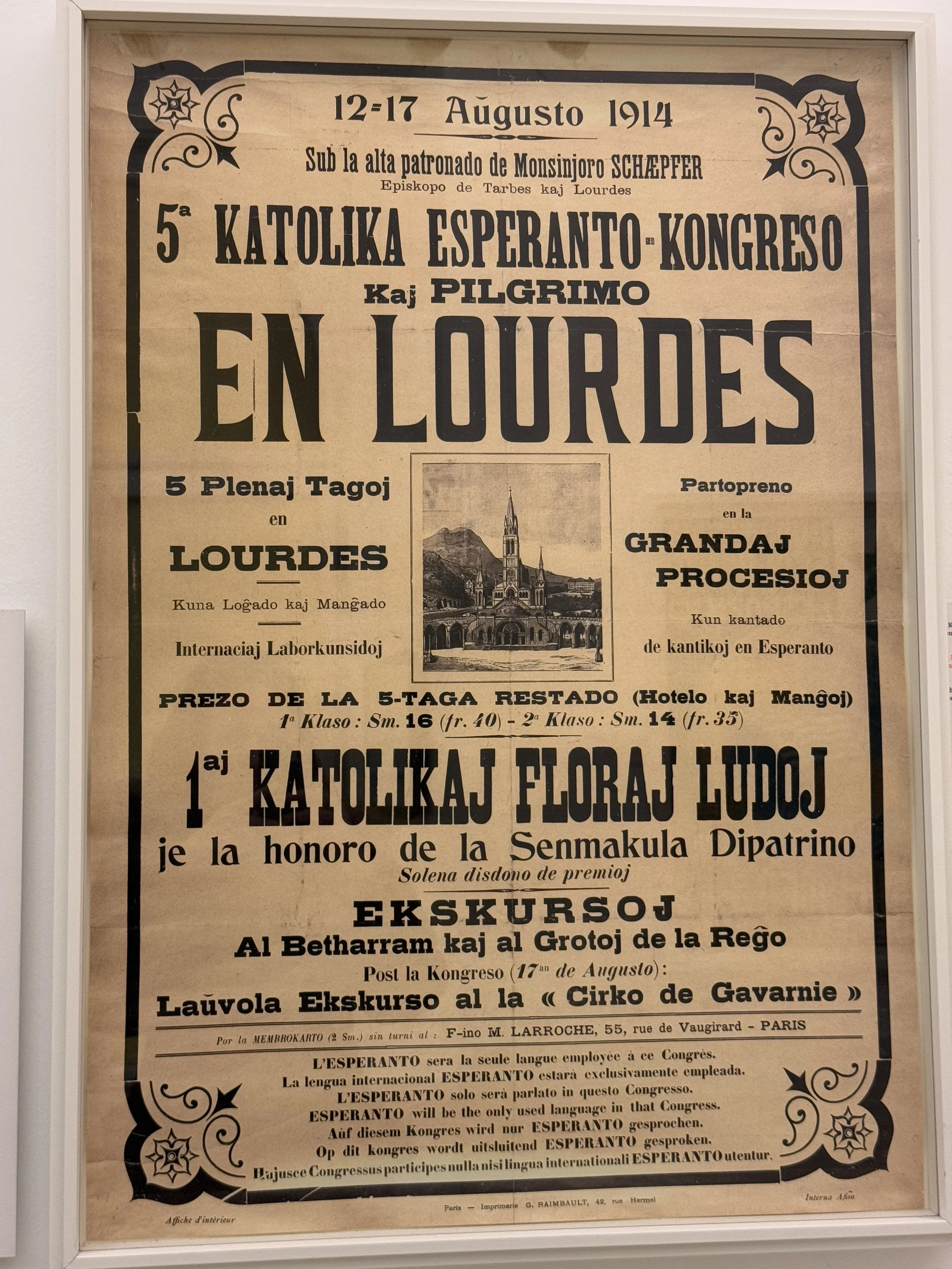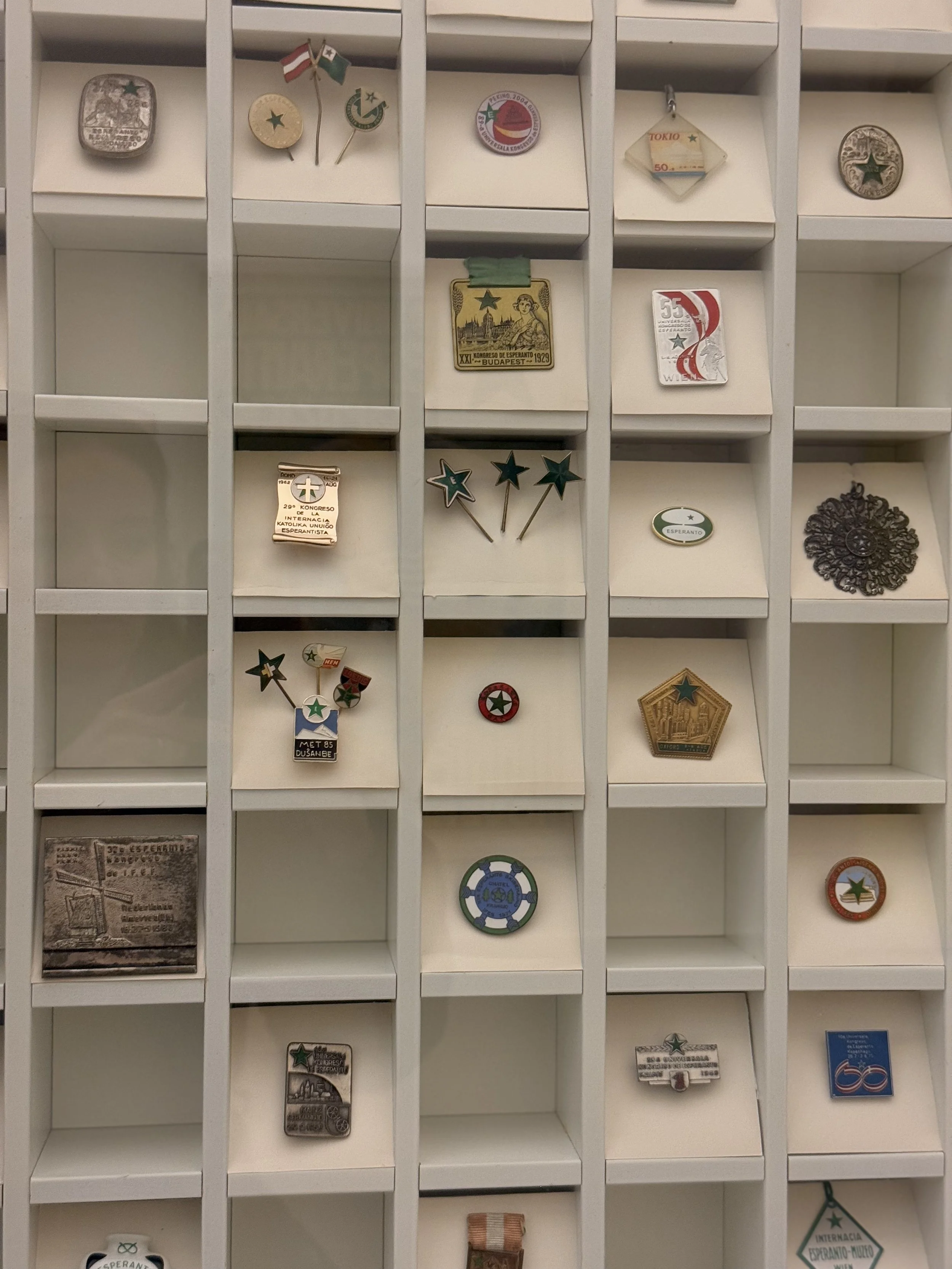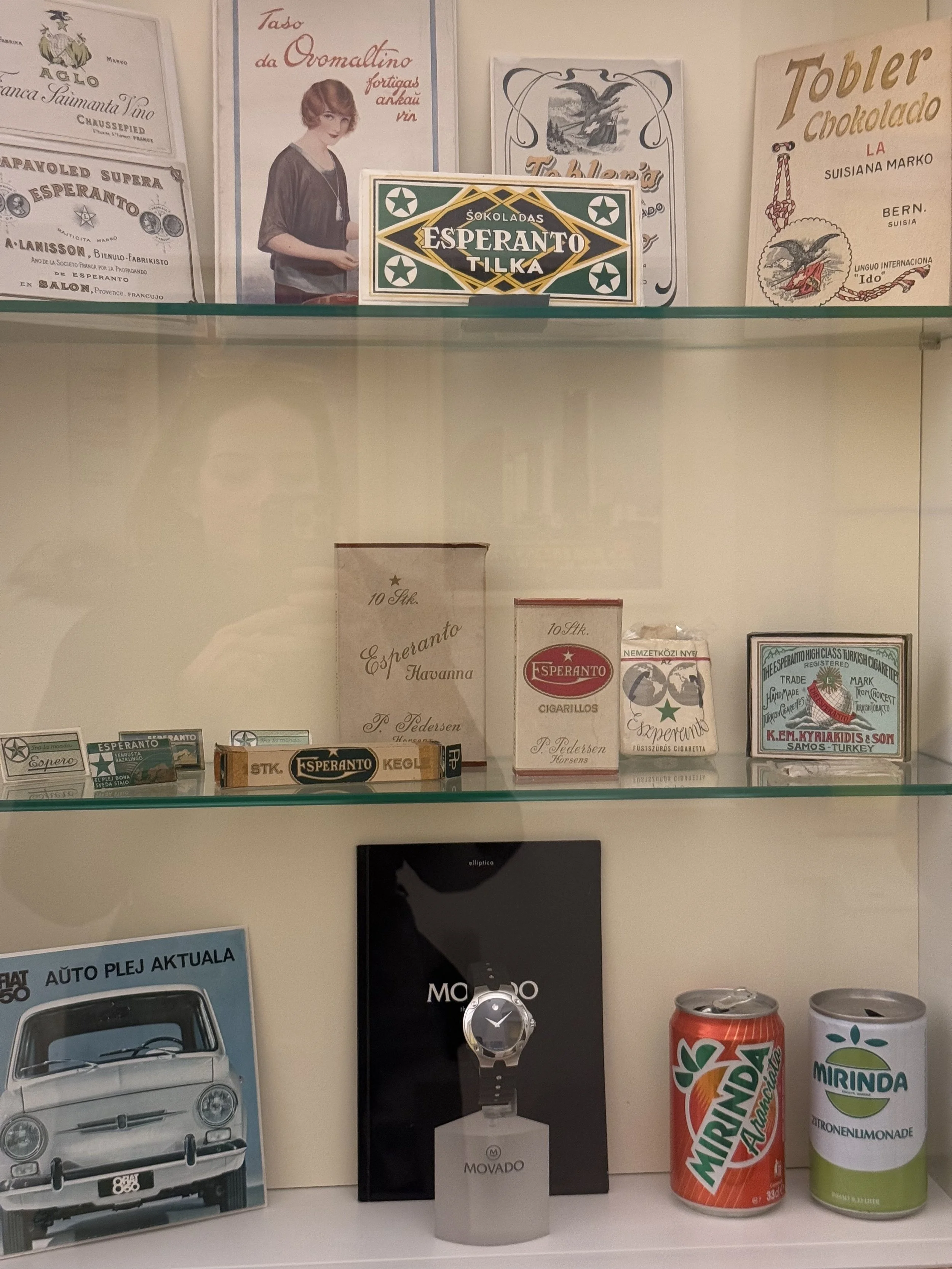Exploring Vienna, Austria
Time needed in this city: 3 nights
(Description)
The below information is a complete guide of the best places to stay, the top rated places to dine and drink, and all there is to see and do. We’ve also included transportation tips, as well as a summary of the history of this (insert description here) city!
Jump To:
Where to Stay
From the moment you step onto the marble foyer in the lobby of the Grand Wien, you know your entire experience will be 5-star. The check-in process was incredibly wonderful - Dimitri going above and beyond to give us some suggestions of wonderful cafes and restaurants, as well as helping us get our bearings with what is around us. He also personally showed us to our suite, which was an upgrade from my reservation. In our room, we had welcome pastries and a welcome note, which is always a nice touch.
But, let’s talk about this palatial room! It’s a King Suite City View with a very comfortable king-sized bed, well-appointed furniture, and a spacious bathroom. We absolutely love this room!
As for dining, if you are an IHG Diamond Elite Member, breakfast can be included in your stay, which was a wonderful buffet/made-to-order experience. They also had Unkai Japanese Steakhouse and Unkai Sushi - the latter of which we tried and loved! Finally, the brasserie has a great selection of food and drink items, including pastries! Their gluten-free cake was amazing.
other recommendations
Where to Dine & Drink
Al Borgo
Smart contemporary dining room with a daily changing menu of seasonal specialties from around Italy.
Allergiker Café
A dedicated gluten-free bakery that also caters to several other allergies.
Ausnahmsweise
This gluten-free and vegan bakery serves cakes, cookies, tarts, and quiches. It’s a good option for an afternoon snack. Or, if you’re struggling to find breakfast you can grab something to-go! NOTE: It is not in the city center.
Apron
A Micheline-starred restaurant. Per their site, “The Apron enchants with modern interpretations of Austrian cuisine. Contrasts and unusual textures add surprising accents to every dish. Seasonal ingredients are lovingly prepared, processed and served.”
Blue Orange
They are a café and coffee bar that doesn’t have phenomenal ratings however, for Celiac people, they have gluten-free bagels, which is a great find for breakfast!
Bolena REstaurant & Wine Bar
Per their site, “We offer a classic, modern style of cuisine that has been awarded a Gault-Millau toque and two Falstaff forks. Choose from “á la carte” or menus – three to five courses – put together by our “Chef's Choice”. We change the menu almost entirely on a regular basis, approximately every five to six weeks.” This is in addition to their extensive wine list.
bröselei
A small, gluten-free and vegan restaurant.
Café Bel étage
Per their site, “Café Bel Étage spreads opulently over two floors, giving guests lavish room to imbibe delicious coffee variations or indulge a sweet tooth with Sacher's delectable confections. The Sacher Confiserie impresses with majestic white marble and an array of experiences for the senses. Two separate rooms in the mezzanine, the Séparées Anna Sacher and Franz Sacher offer the perfect setting for a private get-together or event.”
TIP: Try their Sacher Melange - it’s one of the best Melanges in Vienna!
Café Museum
DEVAL
With just six tables, the chef is able to spend time with his guests, explaining each course of the Chef’s Choice menu.
Door No. 8 - The Steakhouse
An upscale steakhouse.
Edvard
A Michelin-starred restaurant serving a seasonally-inspired menu, injected with fresh pops of color by chef Paul Gamauf. His dishes lean towards vegetables and herbs with subtle Mediterranean influences. You can choose a set menu comprised of five, seven or nine courses. This is accompanied by a sophisticated wine list.
ef16
Restaurant & wine bar with a large courtyard garden & daily changing menus using market produce.
Gasthaus Zum Wohl
This is a dedicated gluten-free restaurant that specializes in Austrian food, from schnitzels to strudels.
Hemmers
Freshly cooked dishes, made with regional products from Austria and numerous specialties from South Tyrol.
Ilona Stüberl
Traditional Hungarian cuisine.
JOLA
Per their site, “Our dinner consists of several courses and changes depending on the season. We have a non-alcoholic beverage accompaniment, as well as a wine accompaniment.”
Konstantin Filippou
A two Michelin-starred restaurant serving an extensive tasting menu in which fish and seafood are given top billing while meat plays more of a supporting role. The ingredients for the very modern and contrasting small plates come from Brittany or Scandinavia.
La Paz
Serving Bolivian dishes.
Lebenbauer
Contemporary restaurant with shady garden, serving tofu/tempeh/pasta-based vegetarian & vegan fare.
Leberkas-Pepi Wien Operngasse
Per their site, “The finest quality Austrian beef and pork is mixed in an original, tried-and-tested recipe and baked according to tradition until the delicious, brown crust is formed.”
Loca Casual Fine Dining
A casual, fine-dining restaurant that serves 6-course tasting menus. They will 100% cater to nearly all allergies!
LOLA
Serving Spanish tapas.
Mama Leone
MAST Weinbistro
A green Michelin-starred restaurant for fresh, local ingredients combined to make simply, healthy, clean dishes. These are paired with organic wines.
Pizzeria Scarabocchio
Rustic restaurant in warm colors with wood paneling, serving classic cuisine from around Italy. NOTE: They serve gluten-free pizzas, pastas, and desserts.
Restaurant Chamäleon
Among typical Austrian dishes, you can enjoy original Swiss delights in the cozy and relaxing atmosphere of our restaurant.
Restaurant Duchardt
Cozy venue serving regional dishes with a contemporary touch, plus an extensive Austrian wine list.
Rote
Fancy, chandelier-lit spot at Hotel Sacher showcasing Austrian cuisine amid large oil paintings.
Schnattl
Intimate, wood-paneled dining room offering fine dining with a focus on herbs & garden vegetables.
Silvio Nickol
A two Michelin-starred restaurant serving extremely imaginative cuisine, featuring very sophisticated combinations, based on excellent seasonal produce.
Tian
A one Michelin-starred and one green Michelin-starred restaurant and wine bar with ornate contemporary decor, serving creative meat-free cuisine.
Tiffin Daily Spice
Serving Indian dishes.
Vienna Sausage
They are a premium hotdog company.
Westpol
Per their site, “Recipes from Europe and the Levante interpreted in a modern way. Regional and seasonal ingredients from local suppliers. Freshly cooked.” They serve breakfast and lunch. They do not have many things on the menu that are gluten-free for either meal.
Things to See & Do
Day Trips
4-Hour Private Alpine Hiking Tour 'Matterhorn of the Prealps'
After enjoying private transportation from Vienna, set off on a 4-hour hike to Gaisstein. Set the pace as your experienced guide leads the way to one of the lesser-known lookouts. You’ll see the Matterhorn in all its glory, while enjoying the exclusivity of a private group in a not so common area. At the end of the tour, relax and get warmed up as your van returns you to town.
Budapest Small Group day trip
Get more out of your time in Vienna by going on an action-packed, small-group day trip to Budapest. You’ll have a hassle-free day as round-trip transportation is included. Upon arrival, discover the city's best-known landmarks in a single day, from Gellért Hill, Fisherman’s Bastion, the Hungarian Parliament, Heroes’ Square, and St. Stephen's Basilica. As you go, learn more from your guide—and even try local pastries (own expense).
Cesky Krumlov Small-Group Day Trip
Cross the border into the Czech Republic—and discover the scenic and historical city of Cesky Krumlov—on this seamless, full-day tour from Vienna. Meet at your local hotel in the morning, hop aboard your air-conditioned vehicle, and travel with just a small group for company. You’ll go for an immersive sightseeing tour of the Bohemian city, will discover its UNESCO-listed city center, will see its 13th-century castle, and will enjoy free time to explore Cesky Krumlov independently before returning to Vienna.
Mauthausen Concentration Camp Day Trip
Experience a tragic piece of World War II history with a day trip to Mauthausen Concentration Camp from Vienna. The former camp provides a clear view of the horrors perpetuated by Hitler during the war, and visitors can pay tribute to all the victims of the Nazi regime. An audio guide will provide historical background on each site as you go. Round-trip transport from Vienna is included in the tour.
Private Christmas Time Tour from Vienna to Hallstatt and Salzburg Market
Experience Christmas spirit in three lakes/villages and one picturesque city in one day. The whole day we'll spend in Alp's region, where we'll visit traditional Christmas markets. Hallstatt will greet us with a Christmas fairytale atmosphere, we'll walk across narrow medieval streets, and take a stop for Mulled Wine and Christmas cookies.
The Salzburg Christkindlmarkt at the Dom and Residenzplatz has deep historical roots and is one of the world’s oldest Advent markets. It's a unique setting in the heart of Salzburg’s World Heritage-listed Old City, the traditional market stands, and its long history make the Salzburg Christkindlmarkt a truly special occasion. Local folk customs and traditional decorations for the Christmas tree, gifts for big and small, all kinds of delectable treats in the form of Austrian specialties, mulled wine, and hot punch: at the Christmas market on Salzburg’s Cathedral Square, you will discover practically everything you could possibly wish for.
Private Tour of Bratislava
Slovakia’s charming capital lies on the banks of the Danube River, and at just a short drive from Vienna, it’s easy to visit Bratislava on a day trip. This private full-day tour includes transport from Vienna, a walking tour of Bratislava Old Town and ample time to take in the highlights, including Bratislava Castle, St. Michal’s Tower, and St. Martins Cathedral.
salzburg & lake region
Explore Salzburg on this small-group day trip departing from Vienna. Led by an expert guide, relive your favorite scenes from ‘The Sound of Music’ as you pass iconic locations featured in the film. Discover the best of the lake region of Salzkammergut on a back-roads tour stopping at gorgeous Lake Attersee and St. Gilgen village. See Salzburg’s key sights, including Mirabell Palace and Mozart’s Birthplace on a walking tour of the Old Town. Learn about the city’s rich history from your guide and spend the afternoon relaxing or exploring independently.
Wachau Valley Small-Group Tour and Wine Tasting
Get a true taste of the Austrian countryside on this day trip to the Wachau Valley from Vienna. Your guide leads the way through charming villages and scenic landscape, making stops at UNESCO-listed sites such as the medieval town of Dürnstein. Relax with an authentic lunch at a local wine tavern (own expense) and enjoy tastings at several wineries. Between May and September, your day trip will also include a Danube River cruise.
Historical Exploration
Built in 1726, as a court library to the Hapsburgs, the Austrian National Library is now one of the world’s major libraries, with an extraordinary collection that dates back to the 14th century. The current collection contains around 2.5 million books.
Visitors can visit many special collections in addition to the main halls, which include prints, maps, papyri, portraits, music, and theater. But the magnificent library itself is the focal point here. Among the exhibitions are two exquisite Venetian baroque globes — one for the Earth and one for the sky, each with a diameter of more than one meter.
TIP: Watch library employees slip through concealed passageways, hidden in between bookcases.
Cemetery of the Nameless
The Cemetery of the Nameless was originally opened in 1840 and expanded in 1900. In 1935, a small, modernist graveyard chapel, encompassed by rosebushes, was built on top of a hill between the two parts of the cemetery. While the older part lies abandoned and overgrown, the new section is surrounded by a small wall and has been taken care of by the family of Josef Fuchs, since 1933.
Up until 1900, 478 unidentified people were buried at the cemetery, many of whom drowned in the Danube or committed suicide, thus denied a Christian burial by the Catholic church in Vienna’s Central Cemetery, Zentralfriedhof. The new part of the cemetery is the last resting place for another 104 dead, 61 of whom remained unidentified and most of whom the river’s current brought ashore nearby due to the junction of river and canal.
The last nameless body was buried there in 1940.
Flak Towers
Flak Towers (Flaktürme) are a remnant of WWII meant to serve as platforms for batteries of anti-aircraft guns. In order to boost the air defense of German cities, Hitler ordered the building of a series of immense towers throughout the country. Three of these towers were built in Berlin, two in Hamburg, and six more in Vienna, all of which could fire 8,000 rounds per minute. They also served as air raid shelters for 10,000 people. The walls were made of 11ft.-thick concrete. These towers can still be found all over the city.
Hofburg Palace
Since 1279, the Hofburg area has been the documented seat of government. From 1438 to 1583, and again from 1612 to 1806, it was the seat of the Habsburg kings and emperors of the Holy Roman Empire, and thereafter until 1918, the seat of the Emperors of Austria. Since then, the palace has continued in its role as the seat of the head of state and is today used by the Austrian Federal President.
It has been expanded over the centuries to include various residences (with the Amalienburg and the Albertina), the imperial chapel (Hofkapelle or Burgkapelle), the imperial library (Hofbibliothek), the treasury (Schatzkammer), the Burgtheater, the Spanish Riding School (Hofreitschule), and the imperial mews (Stallburg and Hofstallungen).
During the 15th, 16th and 17th centuries, male aristocracy got new suits of armor for special occasions, much of which now graces the Neue Burg wing of the Hofburg as the Hofjagd und Rüstkammer (Imperial Armoury).
Collection of Historical Musical Instruments
In the imperial staterooms of the Neue Burg, you can see exceptionally precious historical musical instruments from across five centuries. Instruments once played by musicians, such as Wolfgang Amadeus Mozart, Clara Schumann, Franz Liszt and Gustav Mahler are also exhibited in the Collection of Historic Musical Instruments.
The Imperial apartments represent one part of the self-guided tour of the Sisi Museum and Hofburg interiors, sending you through around 20 rooms that offer intriguing clues to the character of their previous Habsburg occupants.
The Imperial Treasury contains a valuable collection of secular and ecclesiastical treasures covering over a thousand years of European history. It houses 21 rooms, filled with collections of rare treasures that were compiled by the Imperial House of Habsburg, including the Imperial Crown, Orb, and Sceptre of Austria, and the Imperial Regalia of the Emperors and Kings of the Holy Roman Empire, including the Imperial Crown of the Holy Roman Empire.
The Hofburg Chapel and the Vienna Boys Choir
The Vienna Boys’ Choir and members of the orchestra and choir of the Vienna State Opera are known as Hofmusikkapelle (Court Music Orchestra) and, as such, perform High Mass in the Chapel of the Imperial Palace on Sundays and religious holidays.
Built between 1552 and 1553, the Swiss Gate bears the insignia of Emperor Ferdinand I and the Order of the Golden Fleece. The gate gets its name from the Swiss Guard who guarded the palace in the 18th century. It is located near the Imperial Treasury.
Hofjagd und Rüstkammer
Translating to “court hunting and armory”, the objects in this museum were created or came into the collection in connection with highly political events: on the occasion of military campaigns, Imperial Diets, homages, coronations, engagements, weddings or baptisms. No other ruling family was connected to as many European countries through marriage as the Habsburgs. Therefore, almost all Western European princes from the 15th to the early 20th century are represented with armor and ceremonial weapons.
Palace of Justice
The Palace of Justice is the seat of the Supreme Court of Austria. The Neo-Renaissance building, erected from 1875 to 1881, is located in the Austrian capital Vienna on Schmerlingplatz, a square near the Ringstraße boulevard in the central district of Innere Stadt.
So why should you go? The architecture is incredible.
Schönbrunn Palace
Schönbrunn Palace is one of Europe's most beautiful Baroque complexes and has been in the possession of the Habsburgs since 1569. The wife of Emperor Ferdinand II, Eleonore von Gonzaga, had a pleasure palace built on the site in 1642 and called the property "Schönbrunn" for the first time. The palace and garden complex, created from 1696 onwards, following the siege of Vienna, was completely redesigned under Maria Theresa after 1743. Today, due to its historical significance, its unique layout and magnificent furnishings, the palace is a UNESCO World Heritage site. It has been a tourist attraction since the mid-1950s.
NOTE: If you want to skip the line and get a full palace and garden tour, click here.
Wien Museum Hermesvilla
The Hermes Villa is located in the Lainz Game Reserve and was once gifted by Emperor Franz Joseph as a "Palace of Dreams" to Empress Elisabeth, also known as Sisi, in order to keep her in Vienna more often. Carl von Hasenauer, a well-known architect of Vienna's Ringstrasse, built the romantic little palace from 1882 to 1886. The name of the Hermes Villa is derived from the statue of Hermes, which stands in the palace garden.
Today, the lavishly furnished building is considered to be an outstanding example of late-romantic villa construction and was designed by the best artists of Historicism, including Gustav Klimt and Franz Matsch.
Wiener Pestsäule (Vienna Plague Column)
The Great Plague of Vienna’s death toll estimates somewhere between 12,000 to 75,000 people, during the 14th and 17th centuries combined. As a “remembrance” of sorts was built in 1693 in the form of a 69 ft. tall tower that served as both a memorial, as well as political propaganda.
Religious History
Dominikanerkirche (Dominican Church)
The first church on the site of the Dominican Church was built in 1237, by the newly arrived Dominicans, on a parcel of land allotted in 1225-1226 by the duke Leopold VI. The church was enlarged between 1240–1270 and a new choir was added in 1273. A series of fires caused the construction of a new Gothic church between 1283 and 1302. The nave was extended between 1458 and 1474. This church consisted of a nave with five cross vaults, and two aisles.
This church was heavily damaged during the first siege of Vienna, by the Turkish army in 1529. The choir was demolished and the nave was partly taken down. The building became more and more dilapidated during the next century until it was taken down.
In 1631, the Dominicans started to build a new oblong church with a dome, following the plan of Jacopo Tencala, architect of Prince Maximilian of Liechtenstein. The first stone was laid by emperor Ferdinand II on May 29, 1631, the structural work was finished in 1634, the church was consecrated on October 1, 1634, and the finishing touch was finally given in 1674. The church was elevated to the status of basilica minor in 1927 under the name “Rosary Basilica ad S. Mariam Rotundam”.
Imperial Crypt
The Imperial Crypt below the Capuchin Church and monastery was originally intended to hold only the remains of Empress Anna and Emperor Matthias, who died in 1618 and 1619. The crypt was expanded many times over the centuries to accommodate more royal remains: first in 1657 by Emperor Leopold I, again in 1754 by his daughter the Empress Maria Theresa, then again in 1908 by Emperor Franz Joseph. The buildings were restored more recently in the 1960s. There are a total of 12 emperors, 18 empresses, and 113 other members of the Habsburg family - 54 of which have their hearts contained in special jars.
Jesuitenkirche (Jesuit Church)
Built between 1623 and 1627, the Jesuit Church was built on the site of an earlier chapel, at the time when the Jesuits merged their own college with the University of Vienna's philosophy and theology faculty. The emperor broke ground for both college and church, with the church itself, dedicated to Saints Ignatius Loyola and Francis Xavier.
In 1703, Brother Andrea Pozzo, S.J., an architect, painter, and sculptor, and a master in the quadratura, was requested by Emperor Leopold I to redecorate the church. He added twin towers and reworked the façade in an early Baroque style with narrow horizontal and vertical sections. Pozzo died unexpectedly in 1709, just before he was to move to Venice, and was buried in the church.
Minorite Church
The Minoritenkirche (Minorite Church) is one of the oldest and most artistically significant churches in Vienna. The formal name of the Minoritenkirche is the 'Italienische Nationalkirche Maria Schnee' ('Italian National Church of Mary of the Snows'), because Joseph II gave it to the Italians in 1782. The church is built in the French cathedral Gothic style in the historical centre, or First District of Vienna.
TIP: Grab tickets to one of the classic evening concerts in the church.
St. Charles Church
In 1713, one year after the last great plague epidemic, Charles VI, Holy Roman Emperor, pledged to build a church for his namesake patron saint, Charles Borromeo, who was revered as a healer for plague sufferers. Construction began in 1716 and was completed in 1737 using partially altered plans. The church originally possessed a direct line of sight to the Hofburg and was also, until 1918, the imperial patron parish church.
“FUN” FACT: Next to the Church was the Spitaler Gottesacker. The composer Antonio Vivaldi died in Vienna and was buried there on July 28, 1741, but his tomb has been lost over time. The church hosts regular Vivaldi concerts in his honour.
St. Stephen’s Cathedral
St. Stephen's Cathedral is the mother church of the Roman Catholic Archdiocese of Vienna and the seat of the Archbishop of Vienna, Christoph Cardinal Schönborn, OP. The current Romanesque and Gothic form of the cathedral, seen today in the Stephansplatz and was consecrated in 1147.
Stephansdom Crypt
Just beneath the stone floors lie the skeletal remains of over 11,000 people. The vast Stephansdom crypt is divided into a number of smaller crypts and catacombs, and is still an active burial spot (the last one was 2004). The reason for this? During the Bubonic Plague in 1735 and in order to keep it at bay in Vienna, the numerous cemeteries, surrounding the Stephansdom and the charnel house (a building for storing stacked bones), were emptied and thousands of bones and rotting corpses were thrown down into the pits, dug in the floor of the crypt. Unfortunately, from time to time, the smell was so bad that mass could not be held. Even more unfortunate were the prisoners that had to well say… “break down” the bodies to stack the bones and keep the smell at bay. If all that wasn’t enough, if you choose to head down there, you may also see some royal organs in jars. We have no idea why but yes, it was a “thing”.
Steinhof Church
The Church of Saint Leopold at Steinhof is an Art Nouveau masterpiece from Otto Wagner, built between 1904 and 1907. Alongside the Secession, it is considered to be a key Art Nouveau work in Vienna and also has similarities with St. Charles Church at the Vienna Central Cemetery.
NOTE: You can access the interior on Saturdays and Sundays.
Votivkirche (Votive Church)
When Emperor Franz Joseph survived an assassination attempt in 1853, his brother had the Votivkirche church built, which was completed in 1879.
Wotruba Church
The Kirche Zur Heiligsten Dreifaltigkeit (English: Church of the Most Holy Trinity), better known as the “Wotrubakirche” or “Wotruba Church”, is a Catholic church located in Liesing, Vienna. It was built between August 1974 and October 1976, based on a design by Austrian sculptor, Fritz Wotruba.
Wotruba's church was inspired by Chartres Cathedral, and built in a Brutalist style. Built of 152 concrete blocks, it has no visible symmetry, and makes use of clear glass windows to provide light. The altar is made of artificial marble. The bronze crucifix is a copy of one that Wotruba designed for the hofkirche in Bruchsal, Germany.
The Arts & Sciences
Belvedere Museum
Prince Eugene of Savoy successful general and art connoisseur, had Belvedere garden palace built in the 18th century by Johann Lukas von Hildebrandt as his summer residence – at the time it was still outside the gates of the city.
This baroque architectural jewel consists of two palaces (Upper and Lower Belvedere), which today, house Austrian art from the Middle Ages to the present day.
TIP: To skip the line and get a full tour of the Upper Belvedere, click here.
Brennpunkt°
Founded in 1985, Brennpunkt° was originally called the “Heating Museum of Vienna” and initially displayed various pieces of (primarily Viennese) heating equipment but over time, expanded to cover the creation (or extraction) and utilization of heat in other activities like cooking, bathing, and laundry, as well as the social and cultural impacts of the development of these technologies. It now describes itself as a museum of “Heizkultur,” or heating customs.
Clock Museum
A small museum filled with over 1,000 clocks, and one particular clock calibrated to run until the year 9999. This 230-year-old astronomical clock, constructed by an Augustinian friar, was built in 1679 and calibrated up to the year 9999. With layers upon layers of golden gears, and over 30 readings and dials, it is stunning. One of the hands takes 20,000 years to revolve:
The world’s only public museum, dedicated solely to globes, contains an astonishing collection of different kinds of globes from around the world. For example, there are folding fabric globes (which were inflated with a bellows), giant man-sized globes, and tiny plum-sized globes, each exquisitely made with dark wood, fine lines, and rich colors.
Another item of interest in the museum is the brass tellurion - a mechanical demonstration of the earth’s movement about its axes, consisting of a long arm at the end of which is a small rotating globe, with a moon spinning around it. At the other end of the arm is a charmingly simple sun: a candle and a brass reflecting disc. With a turn of the crank, the system comes alive. As the earth and moon spin, the tellurion shows seasons, eclipses, tides, precessions of the equinox, and other astronomical phenomena.
NOTE: The Esperanto Museum is in the same building and included in the same ticket. See “Esperanto Museum” under “Unique Experiences” for more information.
Kunsthistorisches Museum
Emperor Franz Joseph I of Austria-Hungary opened this museum around 1891 at the same time as the Natural History Museum. The two buildings were constructed between 1871 and 1891 according to plans by Gottfried Semper and Baron Karl von Hasenauer. The emperor commissioned the two Ringstraße museums to create a suitable home for the Habsburgs' formidable art collection and to make it accessible to the general public.
The interiors of the museums are lavishly decorated with marble, stucco ornamentation, gold-leaf, and murals. The grand stairway features paintings by Gustav Klimt, Ernst Klimt, Franz Matsch, Hans Makart and Mihály Munkácsy.
Want to skip the line and get a private tour? Click here.
The Habsburg’s royal collection of art has over 2,000 curiosities and art objects of the Kunstkammer, contained in their own space within the museum. It includes carved rhinoceros horns, a musical clock in the shape of a ship, a glass container shaped like a heron with real heron feathers, automatons, tapestries, scientific instruments, and ivory sculptures. A golden salt cellar,from the 16th century, is estimated to be worth about $65 million.
Leopold Museum
The Leopold Museum is home to one of the largest collections of modern Austrian art, featuring artists, such as Egon Schiele (the world’s largest collection), Gustav Klimt, Oskar Kokoschka, and Richard Gerstl.
The more than 5,000 exhibits, collected by Elisabeth and Rudolf Leopold over five decades, were consolidated in 1994 with the assistance of the Republic of Austria and the National Bank of Austria, into the Leopold Museum Private Foundation. In 2001 the Leopold Museum was opened.
Majolikahaus
Constructed in 1898-99, the Majolica House is entirely covered with majolica, or glazed earthenware tiles in the colorful floral designs, which characterized the early Vienna Secession. The Art Nouveau floral design of its façade was made by Otto Wagner's student, Alois Ludwig.
MUMOK (Museum of Modern Art Ludwig Foundation Vienna)
Mumok is a museum in the Museumsquartier in Vienna. It has a collection of 10,000 modern and contemporary art works, including major works from Andy Warhol, Pablo Picasso, Joseph Beuys, Nam June Paik, Wolf Vostell, Gerhard Richter, Jasper Johns and Roy Lichtenstein. Over 230 art works were given to the museum by the German industrialist and art collector, Peter Ludwig and his wife, Irene, in 1981.
Museum of Art Fakes
The Museum of Art Fakes (Fälschermuseum) in Vienna is a little gallery that doesn’t have an original work in it. The collection contains works that appear to be from such art world luminaries as Klimt, Rembrandt, and Matisse, but were in fact created by the hand of some enterprising forger.
Naturhistorisches Museum (NHM)
The NHM Vienna is one of the largest museums and non-university research institutions in Austria and is an important center of excellence for all matters relating to natural sciences. The museum's 39 exhibition rooms cover 8,460 square meters and present more than 100,000 objects. It is home to 30 million objects available to more than 60 scientists and numerous guest researchers who carry out basic research in a wide range of topics related to human sciences, earth sciences, and life sciences.
Otto Wagner Villa I (Ernst Fuchs Museum)
From 1886 to 1888, Otto Wagner built the opulent white summer villa, surrounded by nature, for himself and his beloved wife, Louise. With its legendary summer parties and salons, the Art Nouveau jewel's reputation extended far beyond the city limits. Because the greats of their time came and went here, the Wagner Villa was a meeting place of fine Viennese artistic society. Stylistically, the residence is anchored in Historicism and was intended to pay homage to Wagner's favorite Italian architect, Palladio.
The painter, Ernst Fuchs, leading representative of Vienna's Phantastic Realists, renovated the villa and opened it to the public.
Sigmund Freud Museum
In 1891, Freud moved into this new (at the time) building - the previous building on the site, once the home of Victor Adler, had been torn down. He lived and worked there for 47 years, producing his infamous writings from that same space.
During your visit, you will see his former practice, the waiting room, part of his old private quarters, and his extensive antique collection. You also get to see Europe's largest psychoanalytic research library with over35,000 volumes.
NOTE: His famous couch is now in the Freud Museum in London, along with most of the original furnishings, as Freud was able to take his furniture with him when he emigrated. A third Freud Museum, after London and Vienna, was started in the Czech town of Příbor in 2006 when the house of his birth was opened to the public.
The Albertina
The Albertina is a museum in the Innere Stadt (First District) of Vienna. It houses one of the largest and most important print rooms in the world with approximately 65,000 drawings and approximately 1 million old master prints, as well as more modern graphic works, photographs, and architectural drawings. Apart from the graphics collection, the museum has acquired (on permanent loan) two significant collections of Impressionist and early 20th-century art, some of which are on permanent display. The museum also houses temporary exhibitions.
Vienna Beethoven Museum
In the summer of 1802, Beethoven began grappling with progressive deafness. At 32 years old, he penned the Heiligenstädter Testament, a raw and emotional letter where he vehemently confronted his deafness and the elusive cure, ultimately resolving to forge ahead in his musical career. His home is now a museum dedicated to his impairment, as well as his career.
Fourteen curated rooms allow visitors to immerse themselves in the composer’s life - early hearing devices called “ear pipes” and sound amplifiers for his piano sit in the museum, along with items like eggs, which Beethoven was said to have thrown in bad temper are also on display.
Vienna State Opera
Built from 1861 - 1869, the Vienna State Opera is a historic opera house and opera company. The 1,709-seat Renaissance Revival venue was the first major building on the Vienna Ring Road and was inaugurated as the "Vienna Court Opera" in the presence of Emperor Franz Joseph I and Empress Elisabeth of Austria. It became known by its current name after the establishment of the First Austrian Republic in 1921.
Wolf and Cow Playing Backgammon Mural
In the 15th century, Pope Pious II described all the fine houses of Vienna as “being painted inside and out with fabulous scenery”. During that time, the houses would have featured religious and historic portraiture, along with some humorous imagery. While most are gone, there are a few left, including one depicting a wolf and a cow playing backgammon together, which dates back to 1509. Today, it’s not as clear what they are playing as the refurbishment in the 18th century had done some damage. Nonetheless, it’s something fun to see.
Unique Experiences
Ampelpärchen
Walk around Vienna’s city center and you’ll likely spot traffic lights that celebrate diversity, guiding you across the streets. These fixtures were inspired by Europe’s most politically charged annual popular culture event: The Eurovision Song Contest.
The 2014 Contest was won for Austria by Conchita Wurst, a drag queen with a surname that means “sausage” in German. Eager to welcome Europe to its capital in 2015, the Austrian authorities commissioned three new diversity pictograms for Vienna’s traffic lights. These were to be temporary installations however, a Facebook campaign led to them being permanent.
Cloth Measures
The Vienna cloth measures, also known as the “two cells”, are a set of standardized length measures installed in the 1450s. They were designed to help people see if the length of cloth they purchased was what the seller claimed. Because cloth was often measured in “ells” (the length of your lower arm from the elbow until the wrist), it was necessary to use these.
The top rod is the so-called cloth ell, and is 77.6 centimeters long, while the one below is called the “linnen ell” is 89.6 centimeters long.
Esperanto Museum
In the 1870s, “Esperanto”, a new language, was invented by optometrist L.L. Zamenhof. Since Zamenhof was a speaker of Russian, Yiddish, German, Belarusian, and Polish, it seemed reasonable, to him, that a language combining all of these should be developed. In 1887, he published a book about it, hoping the language would take off. It did… but not in the way he had hoped.
Hitler declared in Mein Kampf that Esperanto would be used to unite the world’s Jews - all of Zamenhof’s children and many other Esperantists were killed in the Holocaust as a result. The pre-war Japanese government declared that Esperantists were like watermelons, “green on the outside, red on the inside.” Similarly, Stalin denounced Esperanto as a “language of spies.” Naturally, so did Joseph McCarthy.
FUN FACTS: George Soros is a native speaker of Esperanto, William Shatner famously learned Esperanto for the all-Esperanto horror movie, “Incubus”, Yugoslavian dictator, Josip Broz Tito, was an amateur Esperantist, and Popes John Paul II and Benedict XVI have been known to give blessings in Esperanto. Also, Jules Verne, Leo Tolstoy, and J.R.R. Tolkein were all speakers, learners, and enthusiasts of the language.
Gasometer Town
A gasometer is a gigantic structure, capable of storing tens of thousands of cubic meters of gas, with diameters that could reach up to 197 ft.. Due to technological advances at the end of the 19th century, these buildings have been largely replaced by other methods of gas storage, such as giant underground facilities and high pressure pipes. In Vienna, they were in use until 1984.
While some of these buildings have been demolished, others have been reclaimed and converted for new purposes, including the ones in Vienna. From 1995 - 2001, these structures were renovated to include shopping malls on the lower floors, office space on the middle levels, and apartments at the top of the structures.
FUN FACT: Between 1984 and 1995, the four gasometers had a brief stint in the film industry, as a setting of one of the James Bond films and as a venue for raves.
Hundertwasser's Odd Architecture
Born Friedrich Stowasser in Vienna, in 1928, this artist and architect took on the more grandiose name
Friedensreich Regentag Dunkelbunt Hundertwasser” during a stint at the Academy of Fine Arts in Vienna. Preferring spirals and curves to straight lines, he designed many eccentric structures with mismatched windows, some with trees growing out of them, undulating floors, bright tiles, and unexpected domes and curves. Three of his most famous structures can be seen in Vienna; the municipal heating plant Fernwarmewerk, the Hundertwasserhaus apartment building, and the KunstHaus, which is a museum of his works.
prater Park
The area that makes up the modern Prater was first mentioned in 1162, when Emperor Friedrich I gave the land to a noble family called “de Prato”. The word "Prater" was first used in 1403, originally referring to a small island in the Danube north of Freudenau, but was gradually extended to mean the neighboring areas as well. The land changed hands frequently until it was bought by Emperor Maximilian II in 1560 to be a hunting ground. To deal with the problem of poachers, Emperor Rudolf II forbade entry to the Prater. On April 7, 1766, Emperor Joseph II declared the Prater to be free for public enjoyment, and allowed the establishment of coffee-houses and cafés, which led to the beginnings of the Wurstelprater. Throughout this time, hunting continued to take place in the Prater, ending only in 1920.
In 1873, the Vienna World's Fair was held in the Prater. A large area was set aside for the fair, centered on the Rotunde, which was built for the occasion and was the fair's largest building. It was later destroyed by a fire in 1937.
In 1895, on the grounds of modern-day Kaiserwiese, an attraction called "Venice in Vienna" was established. It included an artificial lagoon to simulate the canals of Venice, Italy.
Since this time, the park land has shrunk significantly while the attractions offered have increased. It is open 365 days a year, though less is open in the winter.
From 1897 to 1985, the Wiener Riesenrad (Grand Ferris Wheel) was the largest in the world. Found in Prater Park, just north of Vienna’s Inner City, the giant ferris wheel will be, for lovers of cinema, forever linked to the classic 1949 film, The Third Man.
Filmed almost entirely on location amongst the actual rubble of Vienna in the late 1940s, one of the most famous scenes was shot on this iconic ferris wheel. Discovering that his friend Harry Lime had not only faked his own death, but was mixed up in a black market racket selling doctored penicillin, which caused the deaths of many children, the Riesenrad was where Lime, looking down 212 feet to the people below, asks Martins, “Would you really feel any pity if one of those dots stopped moving forever… if I said you can have twenty thousand pounds for every dot that stops.”
The grand ferris wheel is largely unchanged from its condition during the filming - the distinctive red numbered gondolas provide the same views as before, and evensSome of the old gondolas can be reserved for romantic dinners.
Madame Tussauds Vienna is a wax museum and tourist attraction located at the famous amusement park, Wiener Prater. It was founded by Marie Tussaud and is the 11th location for the Tussauds franchise. It officially opened on April 1, 2011 by the former Austrian president, Heinz Fischer. So far, it features more than 90 figures on three floors.
The Republic of Kugelmugel was originally constructed by the artist Edwin Lipburger and his son Nikolaus Lipburger in 1971, in a small Austrian town called Katzelsdorf. The building was 25 ft. in diameter and is constructed of timber blocks covered with zinc sheets. At first, it served as a painter’s atelier. But after some time, local authorities informed the Lipburgers that spherical buildings were not allowed.
In an attempt to protect their creation from being demolished, the Lipburgers created their own Kugelmugel township, complete with self-made street signs surrounding the sphere. Later, as the legal dispute escalated, Edwin Lipburger attempted to declare the structure as its own federal state, the Republic of Kugelmugel, even going so far as to issue his own stamps and currency and refusing to pay taxes. The elder Lipburger was eventually sent to jail, for 10 weeks in 1979, for the offense of putting up unapproved street signs.
In the early 1980s, Austria’s culture minister, Helmuth Zilk, suggested Kugelmugel be moved to the Vienna Prater amusement park. The Lipburgers went along with the idea, having been promised access to tap water, electricity, and sewers. But these facilities were never provided, which resulted in a long-lasting dispute with the city of Vienna.
Today, it sits in the middle of this amusement park with barbed wire around it.
Rathaus Paternoster
The Viennese City Hall houses one of only six Paternosters in the whole city - continuously moving, two-person elevators that move at a speed of 1 foot a second. It is open to the public, but only through a free tour of city hall, as supervision is required. Because of its constant motion and lack of doors on the cabins, this might not be suitable for those with mobility issues or delayed reactions.
THE SPANISH RIDING SCHOOL
While the building that houses the Spanish Riding School was built from 1729 - 1735, the training of the horses started nearly 200 years before that. Horses were specially trained to be used in battle and people were so amazed by what the horses could do that the king, at the time, saw an opportunity to specially train horses for entertainment and competition purposes, more specifically, Lipizzaner horses (from Lipica).
Today, the Spanish Riding School preserves classical dressage and the training of these horses. The leading horses and riders also periodically tour and perform worldwide. It is one of the "Big Four" - the most prestigious classical riding academies in the world, alongside the Cadre Noir, the Portuguese School of Equestrian Art, and the Royal Andalusian School.
There are three ways to visit the Spanish Riding School:
In the morning, during which 1-hour training sessions of the Lipizzaners are conducted. This is typically held at 10 am and costs €17. Make sure to purchase in advance.
Attend a performance of the Ballet of the White Stallions, where you see fully trained Lipizzans. Tickets start at €26 and is held about once a week. Get hours, pricing, and make your reservation in advance.
Take a group tour of the facilities at €24 per person. We took this option, since the riders and horses were on winter break. We still did get to see plenty of horses!
Ungarisches Haus (Hungarian House)
Elizabeth Báthory is listed in the Guinness Book of Records as the most prolific female murderer ever. She allegedly tortured and killed more than 600 virgin women in order to drink and bathe in their blood, believing it would preserve her youth and beauty. With the promise of food, shelter, comfort, and security, the young women would leave their families to serve the mysterious noblewomen.
At the turn of the 17th century, the “Blood Countess” intermittently lived in her husband’s Hungarian House at 12 Augustinerstrasse, right in the heart of Vienna. The rest of her time was spent at Cachtice Castle, where she eventually moved full-time as she drew more and more suspicion.
NOTE: The house is not open to the public, but you can see it from the street.
Walking Tours
Tiergarten Schönbrunn
Established in 1752, Schönbrunn Zoo is a 42-acre zoo in the city of Vienna. It is the world's oldest zoo still in operation and is also a UNESCO World Heritage Site, being a part of the Schönbrunn Palace gardens.
As of 2021, the zoo was “home” to a total of 707 different species with around 8,250 specimens.
Wandering
How to Get Around
In & around the city
Taxis - Always ask the rate before hopping in!
U-Bahn (Subway) - the most popular way to get around - it’s very clean, always on time, and easy to use.
Uber - This is the best and most cost-effective way to get around by car.
To/From the airport
There are several ways to get to/from the airport:
Uber - This is the best and most cost-effective way to get around by car.
A History Summary
1st century - the Romans created a military camp in what is present day Vienna. It would remain for the next 400 years.
212 AD - The settlement was raised to the status of a municipium (you can still see where the encampment placed its walls and moats, in the streets of the First District.
6th century - Byzantine copper coins were found, proving the Lombards, Slavs, and Avars inhabited the area when the Romans left.
976 - The Margraviate of Ostarrîchi was given to the Babenberg family. Vienna lay at its border with Hungary.
1155 - Margrave Henry II of Austria made Vienna his capital.
1156 - Austria was raised to a duchy in the Privilegium Minus, with Vienna becoming the seat of all future dukes. During that time, the Schottenstift was founded.
1192 - 1200 - King Richard the Lionheart was discovered and captured by Duke Leopold V the Virtuous two days before Christmas. It led to the creation of a mint and the construction of city walls near the year 1200 (some of which you can still see today).
1221 - Vienna received the rights of a city and as a staple port. This meant that all traders passing through Vienna had to offer their goods in the city, making them an important “middleman” in the trade industry.
1278 - Rudolf I took control over the Austrian lands after his victory over Ottokar II of Bohemia and began to establish Habsburg rule, though it took a long time for the family to establish control.
1280 - Jans der Enikel wrote the "Fürstenbuch", a first history of the city.
1327 - The city received its first seal (coat of arms).
1365 - The University of Vienna was established.
1469 - Vienna was given its own bishop.
1485 - 1490 - The Hungarian King Matthias Corvinus and the Black Army of Hungary conquered the city, and Vienna became the king's seat that served as the capital of Hungary for five years.
1522 - The city was kept under direct imperial control.
1526 - Bohemia was added to the Habsburg realm.
1529 - Vienna was unsuccessfully besieged by the Ottoman Turks.
1548 - The city was expanded to a fortress (11 bastions and a moat were built).
1551 - The Jesuits were brought to town and soon gained a large influence in court.
1556 - Vienna became the seat of the Emperor.
1679 - Vienna was hit with the plague.
1683 - The second Turkish Siege happened unsuccessfully.
18th century - The city was largely reconstructed into a baroque city. Palaces and gardens were built.
1713 - Vienna was hit with a second plague.
1790 - The population grew to 200,000 and the first factories were built. In addition, sanitation issues became a problem, the first house numbers were issued, and a postal service was established.
19th century - Vienna, along with Budapest, became one of the main centers of the Aromanian diaspora.
1805 - 1809 - The French took Vienna twice during the Napoleonic Wars.
1810 - Salomon Mayer Rothschild arrived in Vienna, from Frankfurt, and set up a bank named, "Mayer von Rothschild und Söhne".
1814 - 1815 - The Congress of Vienna took place, in which the political map of Europe was redrawn.
1823 - The Emperor of Austria made the five Rothschild brothers barons.
1830 - 1860s - After the great flood of 1830, Regulation of the Danube was frequently considered. It was finally put into practice during the 1860s. Branches of the Danube were removed an in its place, a canal was constructed.
1848 - The French February Revolution happened.
1858 - The fortifications were demolished, and the broad Ringstraße boulevard was built in their place.
1890 - 1904 - The city expanded two more times.
1900 - Vienna became the “epicenter” of Art Nouveau.
1914 -1918 - While WWI was not an immediate threat to Vienna, there was a food and clothing shortage. It also wiped out the savings of the middle class. This led to the Austro-Hungarian January strike.
1921 - Vienna was separated from surrounding Lower Austria and became a state of its own, with the mayor now equivalent in rank to a state governor. It would be this way until 1986.
1934 - The fire of the Justizpalast (Palace of Justice) in 1927 after violent demonstrations, the collapse of the Creditanstalt, the largest bank of the country, and finally, the dissolution of parliament in 1933, marked the way to the Civil War.
1938 - The Nazis were welcomed in Austria, though the Rothschild bank was confiscated by the Nazis.
1943 - 1945 - The city began being bombed by Italian bombers. After two years of fighting, much of the city had been destroyed. Just a few days after it ended, a provisional city government and administration was created. Also, the political parties were recreated.
1955 - the country regained its political independence and sovereignty with the "Austrian State Treaty".
1970s - Vienna became the third official seat of the United Nations, and the UNO-City was built.
1978 - The first portion of the U-Bahn (subway) was opened.
End of 20th century - A skyline, consisting of several skyscrapers, was created including the Andromeda Tower and Millennium Tower on the left and right sides of the Danube.
2023 - There are more than 180 accredited Russian diplomats in Vienna, and reportedly more than one third are spies using diplomatic cover; Chinese, Iranian, Israeli, Saudi, American, British, and other European spies and counterspies are also in the country. Because of the tolerance of espionage the country is excluded from the Club de Berne.
